
The Goodhue County community itself was acquiring a cosmopolitan flair. The often subtly sarcastic Beacon reported in January, 1884, that "Goodhue County is now blessed with seven first class newspapers," and went on to remark that, "The affairs of the village must be gliding along very smoothly as the council has not had a meeting for months." (That may have been because, at the time, Judge John Wilson was serving as virtually a one-man city government. While continuing his duties as Justice of the Peace, he was also the Village Clerk, Village Recorder, and Village Assessor.) The paper also indicated that Cannon Falls residents were looking outward with interest at the world around them; it reported that regular meetings of a Scientific Society (at which papers were presented) and a Free Trade Club were ongoing.
Yet despite all of these joys, successes and intellectual pursuits, medicine remained primitive, both men and women were often overworked, and illness and death were never far away, even from those who seemed strongest.
The Dibble farm in Stanton Township, now under the management of Alonzo's son Ed, began a transformation away from grain to a dairy operation that milked shorthorn cows. We don't really know what Ed and Alonzo were thinking at the time, but we do know that per-bushel wheat prices had declined by almost 70% over the previous 15 years, and that beginning in 1878, Goodhue County wheat crops began experiencing a severe blight due to stem rust. No doubt the move to dairy cattle was good business.
Ed's sister Sarah, with a few years of teaching already under her belt, went back to school to improve her skills. She attended Carleton college for a year and completed the teacher's course at Winona State Normal School.
In the immediate wake of the sudden and unexpected death of Alonzo's "townie" brother Jonathan, his son Richard "Dick" Dibble's stepmother, also named Sarah, had taken Dick and the other children, Nathan, Minnie, and Daniel, to stay with her brother-in-law Alonzo and his wife Rebecca on the farm in Stanton. When she recovered from the depths of her shock and grief, she and the children returned to her home in town--the "Captain Charles Gellett House", which is today a historical landmark. They were living there in 1880, but it was probably out at the farm on a spring day that year when "Dan Dibble got up early Tuesday morning and found a deer in the door yard. Dan thought he had struck a bonanza and made for the deer aided by nearly a dozen men, who from time to time joined in the chase. Dan caught the deer at last and shot it in the barn and started to school to tell the boys of his exploit, but the owner found out where his pet deer was and came and took it away. Dan has no deer now but he had lots of fun chasing it."
All of the children continued to spend time on Alonzo's farm. Dick learned butchering skills there and as a teenager he began hiring himself out to other farmers in the area.
Around 1882, when he was 20, he and a partner, George Tanner, bought H.N. Geering's meat market and set up shop on Fourth Street in Cannon Falls as Tanner & Dibble. George Tanner was a son of William P. Tanner, Vice President of the First National Bank, of which Dick's uncle Alonzo and the brewer Ferdinand Kowitz were founding stockholders. William P. and his older son William came from New York; George was born in Minnesota. The market was in one of the wood-frame shop buildings on the west side of Fourth Street between Scofield Drugs and the "Estergreen block". (It may even have been the white, 2-story storefront four buildings from the right in the photo "West side 4th. St. looking south from Mill St. before 1878" in "War and the Great White North"; at least, in 1886 it occupied the fourth lot south of the corner of Mill and 4th, as shown on a plat map of downtown Cannon Falls published in the Minnesota Farmer in August of that year.) A few years earlier George's brother William had gone into business with Foster B. Seager; their first venture was also a meat market, known as "Tanner & Seager". But this business had closed not long after its founding and those partners moved on to establish the Tanner & Seager Nursery and Tanner & Seager Ice. When Geering sold out to Dick and George and moved to St. Paul, Tanner & Dibble became the only game in town when it came to meat, at least for a while. Dick may also have been running his late father's livery stable; we are told that the "J. Dibble Livery" was buying advertising in the Beacon around this time.
Tanner & Dibble Meats was just a few doors up from the Kowitz saloon.
On May 5, 1882 the saloon's proprietor, widower Ferdinand Kowitz, Sr., got married again in Red Wing. His bride was 20-year-old Katrina Trenter/Trentor, known as Kate. The Trenters were a German family from the city of Darmstadt in the state of Hesse, just about ten miles south of Frankfurt. They settled in Sand Creek Township in Scott County, about 30 miles northeast of Cannon Falls, before 1855. Kate was born there in around 1862. Kate's parents were John Trenter (born about 1821) and Anna Maria Holmann (born around 1832). Kate had several brothers and sisters; by 1880 her mother had died and Kate was running the household for her father.
Ferdinand's daughter Bertha recalled Kate as a "mean stepmother" and implied that she hired herself out as a housekeeper to get away from her. In fact, it was common in middle-class German families of the time for the sons to work with the father and the daughters to work as maids, laundresses or nannies for other families, and the Kowitzes were probably just following this tradition. Bertha's sisters Edith and Emma also did such work when they became old enough. Her beef with Kate may have had more to do with the fact that Kate was just seven years older than she was. Teenage Bertha may have seen her as an unworthy replacement for her mother as well as a rival for her father's affections. For her part, Kate had experience taking care of children but, being so young, may have lacked confidence in her own authority and may have overcompensated by adopting a tough attitude toward Ferdinand's kids.
Also around 1882, Alonzo Dibble's brother-in-law, Charles Ahlers Jr., returned to Goodhue County with his wife Caroline and their younger children from a brief sojourn in Texas and Kansas. They settled down in Red Wing. The children remaining with the family included William, Louisia, Mary, Alford/Alfred, Lewis, and Charles J. By this time, Alonzo's father-in-law Charles Ahlers presumably having died, Charles J. was known as "Junior" and his father was called Charles Ahlers Sr. Charles J. may have continued farming for a while after his return from Kansas, but eventually he opened a machine shop.
Meanwhile, Alonzo had another brother-in-law, this one perhaps named in his honor, who had remained in Goodhue County and grown to maturity there. In the 1880s Alonzo Ahlers and his wife Sarah Ann Clark Ahlers became progenitors of a very large family. Their first child, Leon Edward Ahlers, was born July 13, 1880 in Hay Creek, where the first Ahlers settled. Not long after that the family moved to the brand new town of Webster in Day County, Dakota Territory, about 40 miles west of the Minnesota River, and about 90 miles southwest of the Halden family's stomping grounds of Fergus Falls. It was there that their other children were born, including:
Julius Alton Ahlers, born May 6, 1882
Sidney Earl Ahlers, born March 19, 1885
Courtney Pearl Ahlers, born October 23, 1888
Naomi A/M Ahlers, born December 29, 1894
Charles Clark Ahlers, born April 2, 1898
Percy Alonzo Ahlers, born November 29, 1900
Foreshadowing what was to come for the city of Cannon Falls, sometime late in 1883 (as reported by Bonfort's Wine and Spirits Circular for December 10 of that year), the Kowitz brewery on Cannon Falls' North Side, across the river from the 4th. Street business district, burned. It was rebuilt almost immediately. The new brewery boasted a 22' x 43' 3-story stone main building, a 2-story frame building 32' x 40', and a 24' x 36' 2-story malt house. All the machinery and brewing equipment was replaced with the latest models.
The 4th. Street butcher Dick Dibble married the mill foreman Norman Coplin's daughter Ella on January 17, 1884 (Ella had applied to be a schoolteacher and passed an examination for the position in Cannon Falls in 1881, though we don't know if she ever taught school). The wedding may have been a somewhat posh affair, suitable for an up-and-coming young businessman. Though both families were from Cannon Falls, apparently no venue there was suitable for the event, because it was held at the "Batlo House"--the Hotel de Batlo--in Red Wing. The hotel was erected by Joseph Batlo in 1874. At the time of the wedding, it was considered to be the "second finest" hotel in the city (as always for this branch of the Dibble family, "pretty good" was good enough). Today the building is the "Eagle House" at 325 Plum St. Dick and Ella's daughter Olive Hattie Dibble was born the following October.
Between those two happy events, on May 21, 1884, at around midnight, a fire began on the second floor of A.O. Sather's store in Cannon Falls. Sather's wood-frame building was on the west side of 4th. St., just north of Van Campen's wood-frame store, which stood on the corner of 4th. and Main (today the brick-faced Van Campen Building occupies the same corner; to its north is the nearly identical Westman & Danielson Building, where Sather's store stood). Between and behind them was Sather's warehouse, which caught fire next. Then Van Campen's building started to burn, at which point those fighting the fire concentrated on trying to keep the flames from moving further north, by soaking the roof of the Scofield Brothers building. In this they succeeded; that building, which was built of limestone in 1878 and faced with brick, is still there today. It was estimated that approximately $14,000 worth of damage was done (about $335,000 in 2017 dollars), only about half of which was covered by insurance.
Nevertheless, the recovery was swift. Van Campen built his handsome Italianate building immediately after the fire. Sather having moved to new quarters across and up the street, the Swedish immigrants Gustavus Westman and John Danielson built their nearly identical, though smaller, adjoining store building on Sather's former lot at the same time. Both buildings were designed and built by A. Doner; they were constructed of limestone and faced with brick like the Scofield Brothers' building, which survived the fire. They strongly resemble that older building, and today one must study the details of their fronts carefully to tell them apart.
The mid-1880s was a time of popular unrest in the United States, both for industrial workers who were experiencing increasing pressure to work longer hours in more difficult conditions, and for farmers, who faced constantly dropping commodity prices on the international market and tighter credit. The farmers around Cannon Falls and the factory workers in Red Wing were looking for relief, and in the fall of 1884 they got a new face, the Red Wing lawyer and Democratic activist Osee Matson "O. M." Hall, to represent them in the state Senate.
Osee Matson Hall was born in Conneaut, Ohio on September 10, 1847. He came to Minnesota straight out of college and settled in Red Wing in 1869, where he started a law practice. He married Sila Elizabeth Magee (born December 12, 1847) in 1873. They had three children: Pauline M. Hall, born in April 1874; Charles P. Hall, born September 22, 1875; and Edward Samuel Hall, born May 26, 1884.
By 1880 Osee was making political speeches, whether in support of local Democratic candidates or his own campaigns we don't know. In that year he gave a speech to a group of Zumbrota farmers in which he deplored modern trends, which he called wasteful: "We require more things to live with than did our fathers--and therefore we live better. We must have finer houses, richer furniture, more delicate and a greater variety of food--a hired girl in the kitchen and a hired man in the stable; our farms must be more extensive, our stock ... fancier, our machinery of the latest pattern ... Weddings are so expensive that few men can afford to marry ... Funerals are so extravagant that it seems to cost more to put a man under ground than to keep him above."
How Hall, a Democrat, got to the state Senate is something of a mystery. The county was largely Republican in those days, as was much of the state. Minnesota state senators served two-year terms and were elected in odd years. History records that a Republican, Martin Spencer Chandler, was elected to the seat in 1883, and that he vacated it halfway through his term. History did not record why he left (he didn't die in office; he lived until 1893). So one might expect that when a Republican state senator suddenly left office, a replacement would initially be appointed, either by the county Republican leadership or by the Governor (who was Republican John S. Pillsbury), and that when they got around to holding an election, the voters would certify the arrangement. Perhaps there was no interim appointment, and the local situation had gotten so bad that the voters were ready to "throw the rascals out". At any rate, O. M. seems to have been popular; he was elected for a two-year term in his own right in 1885.
Farther north, in Fergus Falls, Lars Halden ventured a brief political career of his own. In June of 1886 he was elected a Vice President for the 5th. district of the Otter Tail County chapter of the Farmers Alliance. The loosely-connected Alliance groups began as a way for farmers to get together socially, become educated about farming practices and opportunities, and to purchase supplies and sell produce on a cooperative basis. According to the Park Region Pioneer, during the week of June 5 the Alliance "transacted some important business for the members of the organization in the county, purchasing the twine supply at a greatly reduced rate." But delegates at the meeting in Battle Lake also passed resolutions condemning the railroad companies and endorsing a Republican candidate for office. Oddly though, in September of that year Lars was nominated by the Democratic party for the office of County Commissioner for the 5th. district. We don't know how the election turned out, but Lars doesn't seem to have made the news again after that.
Cannon Falls was well-served medically by the Conley family, several generations of which gave the town doctors and dentists. Foremost of these at this time was Dr. Alonzo Theodore ("A. T.") Conley, whom many historical accounts refer to as the "town doctor". A. T.'s younger brother, Hiram Edward Conley, known as "Ed", gets second billing through no fault of his own. A. T. went straight to medical school and came to Cannon Falls in 1876. But their father Lewis had incurred a major debt in one of the railroad bankruptcies that were common at the time, and Ed had to help bail him out by working in his sawmill back in Kossuth, Iowa.
By 1881, 25-year-old Ed had joined his older brother in Cannon Falls and was beginning to learn medicine as his apprentice. There he met Alonzo Dibble's daughter, the schoolteacher Sarah Dibble. He probably spent a good part of his leisure time in her company, but he knew that if he wanted to be a doctor he would need formal training. So he went back to his home state to attend Iowa University, where he earned his MD in March of 1884, at the age of 29.
Also that month, Sarah attended a meeting of the Goodhue County Teachers Association, during which, the Beacon cheerfully reported, "Nearly every teacher present thought that whispering during school hours was a wrong that should be prohibited as far as possible." Given Sarah's reputation for outspoken and sometimes caustic wit, we can't help wondering whether she was one of the teachers in the minority on that question. She stood out in those Victorian times as a strong leader in the community. She once said she preferred the company of men to that of women "because they talked about affairs of government and 'not about their recipes.'" As a young woman she would walk two miles into town to buy the newspaper in order to read up on political questions. That wasn't a long distance for people to walk in those pre-automobile days, but it was very unusual for a woman to take the time and make the effort to stay informed on matters that were considered to be "men's business".
Ed Conley established his first medical practice in Palo, the little town near Cedar Rapids where he was born. He came back to Cannon Falls to marry Sarah on August 28, 1884, and the couple returned to Palo. But perhaps Sarah was unhappy being so far away from her family; in any case, when an opportunity arose in March 1885 to partner with Dr. E. C. Case in Waterville, MN, about 30 miles southwest of Cannon Falls, Ed took it. It was there, on September 16, 1885 that their first child, Mira V. Conley, was born.
In November 1885 the young couple returned to Cannon Falls for good. Ed went into partnership with his brother A. T. Sarah gave up teaching to become a wife and mother, but she remained active in politics and the intellectual life of the community.
On March 12, 1885, Sarah's brother Ed Dibble married Laura Crook. Laura was born on January 24, 1867 in the "High Prairie". High Prairie is a local name given to a stretch of (relatively) high ground that runs northwest-to-southeast south of the Cannon River. It begins just southeast of the Dibble farm in Stanton and ends in northwestern Leon Township, which is where Laura and her family were living in 1870.
Laura's father was George Crook; he was christened on February 22, 1835 in Leckhampstead, Buckinghamshire, England. He came as a teenager to the United States in 1849 and may have settled in Connecticut. At least, that's where his wife Elizabeth was born, in around 1834. By 1860 they were in Leon, where George had a farm and also worked as a teamster, and in 1861 Laura's older sister, Eefluda Crook, was born. Laura also had a younger brother, William John Crook, who was born on May 5, 1873. Eefluda Crook married James H. Hine on July 1, 1880 in Red Wing. James was one of the Stanton Township Hines, whose various family members owned over 200 acres just a jog down the road to the southwest of Ed Dibble's farm (the family name seems to have been known interchangeably as "Hine" and "Hines"). William John Crook married James Hine's niece Hattie M. Hine on October 17, 1895, in the same town.
Laura applied for a schoolteacher position in Cannon Falls and passed the same examination for the job that Dick Dibble's wife Ella Coplin took; like her, we don't know if Laura ever taught. Ed and Laura's first child, Della Eefluda Dibble, was born on December 22, 1885. While that was a good year for the "farm" Dibbles, it was a bad year for the "town" Dibbles. On May 16 of that year, Dick's older brother Nathan, only about 24 years old, died.
Nathan had had "consumption" (tuberculosis) for some time, though he was healthy enough to work as a laborer on Ed's farm in 1880. We hope he was better at handling farm tools than he was with a gun. On October 29, 1879, the St. Paul Daily Globe reported: "Nathan Dibble, of Cannnon Falls, while cleaning a loaded revolver the other day, accidentally discharged it. The ball struck him in the leg five inches above the knee, and following the bone down came out five inches below the knee; a painful but not dangerous wound." We know so little about Nathan that it is tempting to read too much into his obituary, which says, "It is comforting to Nathan's many friends that during the latter portion of his life on earth, he turned his attention most willingly to the study of the cardinal doctrines of Christianity. He took delight, when he was too weak to read the Bible himself, in hearing others read it to him, saying that he enjoyed it." Perhaps the young man had long been inclined toward spiritual things. Or perhaps he simply sought comfort and reassurance as death loomed closer. We may never know.
Perhaps tuberculosis was becoming endemic in the region despite its early claims to be a health haven. Also in 1885, on April 28, and also of tuberculosis, Dick's father-in-law Norman Coplin died. Norman had left his position as foreman at R. Gregg & Co. Mills the year before and traveled to California in an unsuccessful attempt to find a climate that would cure his disease. He was only 49.
Peter and Mary Aslakson had at least two more children in the early 1880s: Salma/Selma A. Aslakson was born on February 2, 1882. Anna Marie Aslakson was born on June 22, 1885 (another daughter, Agnesa Mary, may have been born in 1884, but does not seem to have lived to adulthood). With several children in tow, Peter definitely needed to make a better living than he was eking out as a schoolteacher and part-time bookkeeper. It was time to put his legal skills to use. He moved his family from the family farm in Mineola Township into Cannon Falls, and opened a law office in a back room on the second floor of the Thompson Building on Fourth St. (where Hi-Quality Bakery is today), across the street from Ferdinand Kowitz's saloon. His fourth child, and only son, John Selmer Aslakson, was born in Cannon Falls on February 14, 1887.
By 1886, Tanner & Dibble was doing quite well in its 2,600 square foot store a few doors up from the Kowitz saloon. As the Beacon reported in one of those items, characteristic of newspapers of the time, that was half news, half advertising, "They keep on hand a full stock of meats and sell at reasonable prices," and, despite the recent arrival of competition, "They have a flourishing trade and are doing a profitable business."
For fun, the Dibble half of the firm, Dick, joined the town's amateur baseball team, which in the 1880s had a winning reputation and was a source of considerable pride. Dick, small and lithe, played shortstop. With him on the team was Judge Wilson's son Ed, a very popular young barber and horse fancier. The team played against regional rivals in Red Wing, Northfield, St. Paul and elsewhere.
Dick's sister Minnie had once considered becoming a school teacher; she took a teaching exam at Cannon Falls in the early 1880s. We don't know if she ever marked up a chalkboard, but in late September 1885 she began working for the Pine Island Journal as a typesetter. Pine Island is a small village in the southeast corner of Goodhue County. The paper proudly reported that she planned to "further perfect herself in the 'art preservative'", a reference to the old saying that printing is "the art preservative of all other arts." There she met a promising young fellow named Harvey Penney.
Harvin Penney, known as "H. C." or "Harvey", was born in 1856 to Eliger P. and Wealthy A. Penney of Roscoe Township in Goodhue County. Eliger, known as "E. P.", was born around 1815 in Maine. Wealthy was born in Ohio. The family lived in Illinois in the late 1840s and in Wisconsin in the early 1850s. E. P. Penney was present for the first town meeting of Roscoe Township, just west of Pine Island, on May 11, 1858, when he was elected as a town constable. By 1870 the Penneys had an 80 acre farm and were growing wheat and oats. Harvin had several siblings: Francis Penney, born around 1848 in Illinois; Mary E Penney, born around 1853 in Wisconsin; Milton Penney, born around 1859 in Minnesota (he died at the age of 8 on July 6, 1867); and Emma Penney. E. P. died on December 30, 1873 and was buried in Roscoe Township. His widow, Wealthy, moved with her daughter Mary and her husband Henry Wright to Paola, Kansas in the late 1870s. Harvey remained behind and worked as a hired hand for the Pine Island farmer Ezekiel L. Swarthout in 1880. On February 15, 1884 he went out to Kansas to visit his mother and sister, perhaps testing the waters for a permanent move, as the Pine Island Journal reported he intended to stay "for a year or two." However, he was back in Pine Island by the beginning of April, the paper reporting tartly, "The change of climate has not magically changed his equilibrium." Wealthy herself may have tired of Kansas or, perhaps, of Mary and her husband; she was back in Pine Island by August 1884. Harvey was busy that summer serving on the "preparing grounds" committee for the Pine Island Independence Day celebration and constructing a fence around the village cemetery, but he spent most of November very ill with typhoid fever. We can only imagine that Harvey met Minnie Dibble soon after she started working for the local paper a year later and they began a courtship. Minnie Dibble married Harvin C. Penney on October 11, 1886 in Cannon Falls.
Dick's cousin Alice M. Dibble, the youngest child of the Stanton farmer Alonzo Dibble, embarked on a teaching career in the early 1880s. She was hired in August 1884 to teach the "intermediate department" of the Pine Island school (what today we call "middle school"). Later that year, at a December meeting of the teachers' association, there was "an algebraic demonstration of cube root by Miss Dibble." The following February found her rehearsing with the "Pine Island troupe" for the part of "Minnie Daze" in a play, Among the Breakers. Alice probably met Francis Ashbury Richardson, known as "Frank", in Pine Island. But by August 1886, she had moved on to teach in Waterville, where her niece Mira Conley had been born the previous year.
Frank Richardson's parents were George Warren Richardson, a clergyman born in Concord, Erie County, NY (near Buffalo) on November 25, 1824, and Caroline W. Fay, also born in 1824 in NY. The family lived in Wisconsin in 1852, when their first child, George O. Richardson was born, and in Illinois in 1854, when their son David F. Richardson was born. In 1857 the elder George claimed land in Section 12 of Kenyon Township in Goodhue County, and Frank was born there on November 5, 1857. Frank's brother Earl M. Richardson was born in 1859, and by 1860 the family had moved east to Pine Island Township. Frank's sister Emma Richardson was probably born there, in 1863. In 1875 Frank's father George moved to Texas with his wife and younger children. There he leased the St. Paul Methodist Episcopal Church of Dallas and turned it into a school for black children. He moved the school and his family to Austin, TX in 1878. It became a "normal school" (teachers college) for African-Americans the following year. The college grew, obtained a land grant from an Iowa farmer named Samuel Huston, and eventually became Huston-Tillotson University, a historically-black university that still exists today. The older Richardson children remained in Goodhue County, and Frank was presumably in the environs of Pine Island when Alice was teaching there. But he soon moved west and established a homestead in Grant County, Dakota Territory (now in South Dakota about 120 miles west of Minneapolis). Alice Dibble married Frank Richardson on February 16, 1887 in Red Wing, and the couple moved to Dakota Territory.
Later that spring of 1887, and once again in May--this time the evening of May 20--fire struck Cannon Falls once more. It began in a supposedly "unoccupied" room on the second floor of Ben Rodgers' saloon on the west side of Fourth St. (about where the P. A. Peterson and Kulker's Restaurant buildings are today). This fire was far worse than the 1884 conflagration. Most, but not all, of the brick and limestone buildings that had been constructed before or after the 1884 fire on Fourth St. between Main St. and Mill St. survived. But there had been a long drought, and all of the wood frame stores on both sides of that block went up like matchsticks and were utterly destroyed, leaving only their stone foundations.
Among these was Tanner & Dibble's meat market, a loss valued at $1,000 as reported by the St. Paul Globe (about $27,000 in 2020 dollars, suggesting that only the value of the business, not the building, was reported). This seems to have ended Dick Dibble's partnership with George Tanner, and after struggling in the fire's aftermath for several months, Dick may have thought it was the end of his brief Cannon Falls business career as well. He and his wife Ella and little daughter Olive moved to St. Paul on November 22, 1887.
Also destroyed, with only its stone vault left standing, was the First National Bank on the northwest corner of Fourth and Mill, in which Alonzo Dibble and Ferdinand Kowitz held stock. Yet again, the town sprang back quickly, with new limestone buildings going up all along the street. One of these was Ferdinand Kowitz's new one-story brick-faced limestone saloon (now the northern-most portion of Scofield Drug & Gifts).
In an even more startling repeat of history, at 10 o'clock in the morning of January 20, 1888, the Kowitz brewery burned again. The frame building was completely destroyed and the stone building was partially damaged. The malt house seems to have escaped. The Red Wing Daily Republican reported that "The fire is supposed to have originated from a drying kiln." Breweries used such kilns for several reasons, including drying wood for barrels and drying hops, the flowers that give many beers their distinctive flavor. The value of the brewery was variously reported as between $7,500 and $10,000 but the insurance paid only $5,500. In early February the papers reported that the Kowitzes were planning to rebuild the brewery in Randolph, a village a few miles northwest of Cannon Falls in Dakota County. However, those plans seem not to have gone forward, and this fire was probably the end of the Kowitz brewery (though one source reports that the brewery burned a third time, without providing a date or other information, and another source reports that the brewery produced 1,000 barrels of beer annually between 1882 and 1889, so the business may have continued somewhere, for a while).
One month after the brewery fire, on February 20, 1888, Ed and Laura Dibble's second daughter, Jessie, was born. Then, on March 17, 1888, a son was born to Dick's sister Minnie and her husband Harvin C. Penney. They named him Milford. Shortly thereafter, Minnie, possibly weakened by her pregnancy, contracted spinal meningitis. She was ill for some time, and died on April 16, 1888. Her infant son, less than a month old, was adopted by James and Elizabeth "Lizzie" Elder, and he grew up as Charles Milford Elder.
James Andrew Elder was born February 3, 1845 near Johnstown in Cambria County, Pennsylvania. Something terrible happened to the Elder family not very long thereafter. James had a close relative--perhaps a brother, or maybe a cousin--named William H. Elder, born in September 1839. By 1850 neither of them was living with their father, and probably not with their mother either. William, at age 12, was living with the family of James and Catherine Douglass. James, age 5, was staying five miles away with the family of Joseph and Theresa Christ. By 1860 James was with the John Murray family and working as a farm laborer, and he certainly understood what it meant to be an orphan. He came to Minnesota in 1865 and was in Cannon Falls by 1872. William came to Minnesota in 1867; by 1879 he was farming in Douglas Township, about five miles northeast of Cannon Falls, in Dakota County. James Elder married Elizabeth Benway before 1875 in Goodhue County. She was the daughter of Canadian immigrants Christopher and Elizabeth Benway and was born in Rhode Island in about 1855. On January 20, 1878, Elizabeth was riding with Miss Eva Doner (a relative of the local architect Abraham Doner) and Miss Nellie Cross when they were involved in an embarassing carriage accident--or at least the way the Beacon reported it was embarrassing. As the women "were driving a spirited team belonging to Mr. Hansen, the horses became unmanageable when near the residence of L.E.C. Poe [a relative of the barber Ed Wilson's mother], and soon began running at the top of their speed. At the corner of Mill and Third streets they turned to the left, and left fair occupant No. 1. A little farther on, the second lady suddenly landed on terra firma without any intention on her part of doing so. The team continued until they ran into C. Doner's fence, when the third lady gave up her seat in the buggy for one on the ground. We are pleased to state that none of the ladies were injured, beyond a few slight bruises. The team was unhurt, but the buggy was somewhat damaged." Yes, Lizzie was fine, and she and James had a daughter, Zita E. Elder, in 1881. But baby Zita died not more than a few months later, on July 11, 1881, and she was buried in the Catholic church cemetery in Miesville, near William's farm in Douglas Township.
James Elder drilled wells with a steam-powered drilling rig, and installed windmills to pump the water from them, and was well known in Goodhue County, where he was involved in Democratic Party politics. His business was very prosperous, and around the time he and Lizzie adopted baby Milford Penney, it was located "across from the Catholic church", which could have been anywhere along 4th. or 5th. St. S., or on West Park St., near the corners of those streets.
What became of Milford's birth father, Harvin C. Penney, we can only guess. An agent of the Kansas City, Fort Scott & Memphis Railroad named H. C. Penney advertised in the Paola, Kansas newspaper in 1891. That's where Harvin's sister Mary Wright lived, and where her husband, Henry, received a US patent for a "hat-mark" in February 1889. There are several other "H. C. Penney" citations from various US newspapers in the late nineteenth century, but none as good a match as this one.
By January 1891 the Elders were getting pretty tired of Minnesota winters and after James sold several city lots to Milford's uncle Dick Dibble they were doing well enough financially to be able to drop everything and head down to Tallapoosa, Georgia where it was warm. They returned around the first of March but they must have liked the southern climate, because James bought land in Marietta, north of Atlanta, and built a house there, and when the snow flew again around the end of November they went back down south. They continued to come back to Cannon Falls each spring for several years, and on their return in 1893 the Beacon reported that they were planning to build "a commodious mansion as soon as the weather permits", but eventually Georgia became their permanent home.
Meanwhile in Cannon Falls, On July 14, 1888, Alonzo Dibble's daughter Alice and her husband Frank Richardson had their first child, a daughter named Zelle Francis Richardson, on their homestead in Dakota Territory.
On November 27, 1888, Dick's sister-in-law, Ella's older sister Hattie, married William R. Vosburgh in Helena, Montana Territory. William was born in either Missouri or Iowa in about 1858. His parents were Nathan B. Vosburgh, a cabinet maker from New York, and his wife Julia. In 1880 Willliam was working as a laborer a few miles east of Helena in or near what is now the ghost town of Rimini.
During the following winter, Alonzo's second wife, Rebecca, contracted pneumonia. She passed away on March 10, 1889. Alonzo was devastated by this loss and never fully recovered, though the extent of the damage was not revealed until some time later.
We don't know how Dick Dibble earned a living after decamping to St. Paul in the wake of the fire, but by the spring of 1889 he'd acquired enough capital to return to Cannon Falls and buy half of Charles Benway's meat market, in partnership with his sole surviving sibling, Dan. Charles Benway was the younger brother of Elizabeth Benway Elder, the adoptive mother of Dick's late sister Minnie's son Milford Penney. The firm was known as Dibble Brothers and was located in the new, post-fire limestone building erected by O. J. Hawkins on the west side of Fourth St., just a few doors north of Kowitz's saloon (now the approximate location of the south half of Althoff's Hardware). As the Beacon later reported/advertised, they offered "a choice line of fresh and salt meats, poultry and game." Dick seems to have had more partners than just his brother Dan. In the spring of 1892, Dibble Brothers merged with a butcher shop owned by Fred Ernest Hillman, the center-fielder on the baseball team for which Dick played shortstop. The company seems to have been called "Dibble & Hillman" for a while, but a year later the partnership was dissolved "by mutual consent". Hillman "retired from the firm" and it was once again known as Dibble Bros. However, just a few months later the Beacon reported that Charles Benway had bought out Dick's share in the business while Dan would "remain a member of the new firm". Either this report was not true or Dick came back and bought out Benway again later, because the company continued to operate as Dibble Brothers well into the early 20th century.
By 1890, with farm prices dropping, credit growing tighter, and industrial working conditions becoming more dangerous and debilitating, Populism and the related Free Silver ideology had gained a strong foothold in Minnesota. O.M. Hall, after a 3-year hiatus from politics, stepped out of his Red Wing law office and returned to public life. This time he ran for the US Congress, and won. He served two terms.
As a Democrat, Hall had to compete with the People's Party (populist) candidate, so it's no surprise that his rhetoric was similar to theirs. His firey speeches against the millionaire "bosses" were very popular. But Hall scorned the "silver men"; although some farm and labor advocates believed that a silver-based currency would make more money available for farm loans and higher industrial wages, Hall and the Democrats believed that the whole 'Free Silver" campaign had been cooked up by the owners of silver mines in the far West.
Unlike many populists then and now, O. M. Hall was firmly in favor of free trade and vehemently opposed to the high tariffs that were supported by mainstream Republicans in his time. In a speech he gave as a Congressman in Philadelphia in 1894, he confronted his Republican opponents: "Is it true, gentlemen, that after a century's protection your boasted industries have become so benumbed, so debilitated, so imbecile that they cannot stand side by side with the American farmer in the struggle for American supremacy?"
Speaking of the Minnesota farmers he represented, he said, "Let me tell you why we are not protectionists. In the wheat fields of Minnesota and Manitoba enormous crops of the world's choicest wheat are grown. Side by side the surplus of these two crops start for the seaboard; side by side they cross the reeling Atlantic; and face to face they meet and compete with each other in the open markets of Liverpool. No farmer has ever yet received one price for that part of his wheat which is consumed at home and a different price for that which is shipped abroad. It all goes at the same price; its price in Liverpool less charges of transportation, etc. The price of the surplus is the price of the entire crop. The Manitoba farmer gets for his wheat its Liverpool price less charges. The price of our Minnesota wheat in New York is the Liverpool price less charges: its price in Chicago is the New York price less charges; its price in Minneapolis is the Chicago price less charges; its price on the interior farms is the Minneapolis price less charges. If you shut Manitoba wheat out of Minneapolis it competes with ours in Chicago; if you exclude it from Chicago, it competes with ours in New York; if you shut it out of the United States altogether, it will still compete with ours in Liverpool; and there, uninfluenced, unprotected by home tariffs, it battles with the world's wheat, and the price of our entire crop is determined by the world's demand and the world's supply. What difference does it make to us then whether we meet our competitors in Minneapolis, Chicago, New York or Liverpool, so long as Liverpool gauges and fixes the price at all these points? Unless our tariff laws can shield us from competition in Liverpool they cannot protect us anywhere this side of Liverpool."
Near the end of the campaign of 1894 O. M. fell ill in the midst of a close race. As he lay on his sickbed, some newspapers in the district published an alleged interview with the populist candidate. As the papers reported:
"Maj. J. M. Bowler, People's Party candidate for congress in the Third district, practically throws up the sponge and asks all Populists and Independents who do not care to vote for him to cast their ballots for Joel P. Heatwole, the Republican candidate. 'Joel Heatwole will be elected to congress in the Third district,' he said yesterday. 'There is absolutely no question about it. The scheme to have the Populists cast their ballots for Congressman Hall and thus throw me overboard has been frustrated. Our people do not want Hall re-elected. We want to bury him so deep that he will never be resurrected. He has betrayed his constituents in voting on silver legislation, and also on the tariff. His vote to reduce the tariff on barley ought to condemn him, if nothing else does. I have been through the Third district from end to end, speaking for the People's party almost daily since last August. I am satisfied that Hall will be snowed under. 1 have said so repeatedly in private, and now say so in public. Those who feel they cannot consistently vote for me should vote for the Hon. Joel P. Heatwole, and ought to induce others in a like frame of mind to do the same thing. I admonish the voters of the Third district not to vote for the traitor Osee M. Hall, and if they follow my advice ihey will not regret it. Heatwole is a clean, able man of good ability, and 1 am sure he will not pander to trusts and corporations as the present member of congress from our district has done."
As reported by the St. Paul Globe (which referred to Heatwole as "Joel Peanut Heatwole, Joel Perfidious Heatwole") , Bowler instantly denounced this as a "forgery": "I believe it was inspired by Joel P. Heatwole, as it is about at par with his whole plan of electioneering for himself. ... I wish further to state that I regard O. M. Hall as an honorable, highminded man, incapable of stooping to dishonorable methods to secure votes for himself."
Hall seems to have been unable to defend himself in this fracas. Whether because voters believed the bogus Bowler capitulation, or simply as part of the massive Republican landslide of that year, which cut Democratic seats in the House of Representatives in half, O. M. lost his seat in 1894 and returned home to practice law on the shores of Lake Pepin.
Hiram "Dr. Ed" Conley also enjoyed a political career during the 1890s, serving two terms as a Cannon Falls alderman and a term as Mayor. At some point he also was president of the Board of Education and of the Goodhue County Medical Society. His and Sarah's family also grew in the early years of that decade: Their daughter Emma L. Conley was born on September 15, 1890. She was followed by a son, Alonzo D. Conley on May 24, 1892, and on February 19, 1894, Ora K. Conley, destined for local fame as a writer, was born. Finally, on February 16, 1900, Lewis E. "Eldridge" Conley was born.
At some point after 1885, the Conley brothers' parents, Lewis and Betsy, moved from Iowa to join their children in Cannon Falls. Lewis had made the transition from sawmill operator and farmer to expert cabinet maker. He also seems to have invested in real estate locally. On March 25, 1897, Lewis and Betsy celebrated their golden wedding anniversary in the home of Dr. A. T. Conley. Lewis died on January 5, 1901 in Cannon Falls; his wife Betsy died on August 23 of the same year in Rochester, MN.
By 1890, the teenage Charles J. Ahlers ("Junior") had learned the machine shop trade and was working in his father Charles Sr's machine shop in Red Wing, while also attending school. By 1895, the shop had already begun to transform itself into a heavy equipment dealership; Charles Sr. and his sons Alford and Lewis were all listed as machinery "dealers" in the State Census that year.
As a young man Charles joined the local militia and served in Company G. That unit had its own basketball team and Charles, who was well known as an all-around athlete, was a prominent member.
Also in 1890, on July 6, Ella Dibble's sister Hattie Belle Coplin lost her husband, William Vosburgh, less than two years after they were married. In around 1897, Hattie married George Alben Colby, a prominent sheep rancher in Cascade County, south of Great Falls, Montana. He was born on Valentine's Day, 1850, in Warner, Merrimack County, New Hampshire and was fifteen years her senior. Hattie's mother Eliza Coplin, and Eliza's granddaughter Olive Dibble, visited them for several weeks in the late summer of 1898. In 1900 the US Census recorded their address as Truly, Cascade County, a little village on the Smith River about 10 miles southwest of Great Falls. In 1910 they were recorded as living in "Orr, Cascade County". Today I can only find an "Orr Ravine", about 15 miles southeast of Great Falls, on Google Maps. Probably neither address was really accurate; they lived on a large sheep ranch and those locations probably reflected Census districts, not their actual address. George visited California in 1906 and bought 200 acres of orange and lemon groves in Glendora, a suburb of Los Angeles, as well as a home in Hollywood. He and Hattie moved there, but George continued to own the sheep ranch, which eventually grew to be one of the largest in the state.
By 1890 the farmer Ed Dibble's sister Alice and her husband Frank A. Richardson had returned to Goodhue County from South Dakota. Their daughter Cora Alice Richardson was born on August 18 of that year. They had a son named George Alonzo Richardson on February 26, 1892, and a daughter named Louise Ahlers Richardson on May 11, 1894. By February of that year, Frank was teaching school in Skyberg, about five miles south of Kenyon, but Alice had temporarily given up that profession to take care of the children. Sadly, on April 23, 1898, the Richardsons recorded the death of a male infant. His birthdate is unknown but he did not live long enough to receive a name. A few years later, around January 1902, Frank experienced a serious mental health crisis. He was examined by two physicians and found to be "insane", and he seems to have been committed to a hospital for some time. By the spring term of 1906, Alice was teaching again, in the Cannon Falls schools. She participated in the Southern Minnesota Teachers Association. She was also a member of the school board that employed her, which seems not to have been considered a conflict of interest in those times. On March 13, 1908, the Beacon reported, "Spring is here! Clarence Holland presented his teacher, Mrs. Richardson with a boquet of half a dozen dandelions on Thursday." That must have been a very early spring indeed; dandelions aren't usually seen in that part of the world until mid-to-late April. Alice was also a member of Cannon Falls' Tuesday Club, a group of women who met regularly to present and discuss information and research concerning national and international political affairs. Her sister Sarah Conley was also a member.
The young boy John Aslakson got three new sisters in the 1890s: Pearl Martha Aslakson was born on February 21, 1891. Mabel Helen Aslakson was born February 16, 1894. Cora Angeline Aslakson was born March 21, 1896. Their father, the successful lawyer Peter Aslakson, embarked on a career in public service. He became Secretary of the Cannon Falls Board of Education in 1891. He served as Cannon Falls City Clerk in 1892-93, succeeding Judge Wilson, and City Attorney from 1894 through 1896. He was also Captain of the Cannon Falls Fire Department Hook and Ladder Company. A lifelong Republican, he was deeply involved in local politics as Chairman of the Third Congressional District Republican Committee from 1896 to 1902.
Peter's father, the immigrant farmer Sven Aslakson, died on November 11, 1894. A few years earlier he seems to have divided his Mineola Township farm between Peter and Peter's younger brother, Samuel O. Aslakson. Peter got about 40 acres and Sam got 117 acres; he stayed on the farm and made improvements to it; under his care it was a very prosperous dairy operation.
In late June of 1891, Alonzo Dibble, at the age of 65 the patriarch of the Minnesota Dibbles, embarked on a trip to Kansas City. When he got there, he wrote his family that he was going on to California. He stayed in Sacramento long enough to "purchase a draft" (perhaps a cashier's check written on a Sacramento bank?). However, he immediately went back to Kansas City and shipped his trunk home from there. Then he journeyed to Des Moines, Iowa, where he mailed the draft and a money order home to his family. Next, he went to Waterloo, Iowa, arriving there on July 10. The Waterloo Daily Courier reported what happened next:
"About 5 o'clock last evening a man came to the Central House and asked for a room. He registered as 'I. William, Minn.' and stated that he didn't want any supper. He had no luggage and retired about 8 o'clock. As landlord Williams showed him to the room which was No. 28, on the third floor, near the head of the stairs, he said to him that the location was such that there would be no noise. 'That's just what I want,' responded the man and closed the door.
This morning he arose early, ate his breakfast and then paid the bill and sat around in the office until between 8 and 9 o'clock when he went upstairs again. A short time afterwards, John Beck, the clerk, heard a noise which he took to be the explosion of a fire cracker. Five minutes later he went upstairs to get the lamps. As he opened the door to room 28 he saw a fearful sight. Stretched upon the floor, diagonally of the room, lay the occupant, dead, with a bullet hole through his right temple and a 32 Smith and Wesson revolver lying on his breast. He had taken off his coat and folded it into a pillow which supported his head. He had taken off his shoes. The bullet had plowed its way entirely through his head and lodged in the lower drawer of the commode. When Mr. Beck reached the room he was gasping for breath but by the time a physician could be called he was dead and only the reflex muscular action following the exit of life was noticeable.
Why did he do it?
This question promises to remain a mystery, as the dead man had used every precaution to conceal all clues to his identity. In his pocket were two pocket books, one of which contained $45 and the other 9.45 in gold and silver coin. In one of the pocket books was a bill of lading with the name of the sender and place torn off, but showing that a trunk containing clothing of the supposed value of $75 was consigned to F.A. Richardson, Cannon Falls, Minnesota.
As stated above every scrap of evidence in regard to his identity was carefully concealed. His name was erased from his memorandum book and torn from the bill of lading, and he had no baggage and nothing else was found about his person, other than stated above, exception an Elgin watch in a silver case.
The anxiety with which he erased his name from his effects makes it probable that the name in the hotel register is an assumed [name] and that he did not desire to have anyone know who he was."
A week later, his trunk arrived at his daughter Alice's house. Two days after that, the bad news came via telegram, confirming the identity of the suicide. As the Beacon reported:
"Mr. Dibble was always looked upon as one of the most substantial and thorough farmers in the vicinity. Thoroughly honest and upright [in his] dealings he was naturally respected and esteemed by all who knew him. He was a thoughtful, unassuming gentle man. He was a careful reader and kept himself posted on most of the questions of the day.
His three children are all married and comfortably settled and his circumstances both financial and social on a sure foundation. His friends did not realize his loneliness that was settled down upon him like a dark cloud after the death of [his] beloved wife two years ago. Naturally inclined to look on the dark side of life at times, this grew upon him as old age came stealing on until his mind seems to have become deranged and he was noticed to be more than usually depressed and thought, as he expressed to a few that his friends were leaving him or had something against him. Had his family and friends but faintly realized his condition how promptly they would have done all in their power to dissipate the gloom.
Alonzo Dibble will always be remembered as a kind and loving father, a true friend, an upright and honored citizen."
There is very little that we can add to this description, except perhaps to speculate that the trip west may have been an attempt to recreate some of the feelings of promise and adventure of his first journey to California, to join the Gold Rush, when he was still a young man. There may even have been a woman in Sacramento, still young in Alonzo's mind, who, he thought, might have missed him when he left, and may still have been waiting... Of course, this is nothing more than romantic imagination, and we probably will never completely understand Alonzo's final wanderings.
The story was shocking, or, perhaps, touching, enough to be picked up and reported by newspapers throughout the country. The Los Angeles Herald reported that Alonzo "had been missing from home since June 26th." This language suggests that he disappeared on that day without telling anyone where he was going, though we don't know that for a fact. The paper described him as a "wealthy farmer", and that he surely was.
Alonzo left the bulk of his farm--336 very prosperous acres--to his son Ed. But he gave 80 acres just north of that property to his daughter Sarah Conley, along with a "yearling mare colt". His daughter Alice Richardson was left $1,500 (worth about $39,000 in 2018), Alonzo's horse Charley, and all of his furniture. Ed's wife Laura got his mare Molly. His nephew Dan received $200 (about $5,200 in 2018 dollars), the same amount given to Edward A. Chapman, a nephew of Alonzo's late second wife Rebecca (the son of Rebecca's brother Joseph Edward ("J. E.") Chapman and his first wife, Hannah Augusta Stevens). Interestingly, Dan's brother, and meat-market partner, Dick Dibble received nothing, though he, like Dan, was a witness to the will.
1891 was a year of widespread tragedy in Cannon Falls. A diptheria epidemic took many lives, including those of two of Sarah and Dr. Ed Conley's daughters, 6-year-old Mira and infant Emma. Ed treated them himself, struggling during what must have been a horrendous 48-hour period to perform tracheotomies to enable the gasping children to breathe, only to watch first Emma, on April 8, and then Mira, on April 10, die. That fall, on September 25, Dick Dibble's stepmother Sarah, sister of his late mother Ann Eliza, died in the hospital in Red Wing. She was just 43 years old.
As the allegedly "Gay Nineties" continued, family members constantly changed partners with joy and sadness in the dance of life.
On September 30, 1890, Lars Halden's wife Anna Kvern Halden passed away from throat cancer at the age of 48. She was buried in the Kongsberg Cemetery, on the farm near Fergus Falls.
Dan Dibble married Isabel/Isabelle Sanders on August 11, 1891 (some sources render her name as "Isabel E. Sanders", and sometimes her last name is given as "Saunders"). Isabel's father was a Scotsman, William Sanders, born around 1842. Her mother may have been Lorinda J. Fields, born in around 1852. The family settled about 50 miles southeast of the Haldens' Fergus Falls homestead, in Alexandria, in Douglas County, MN. Isabel was probably born there in around 1869; William was the school superintendant there in 1880. At some point after 1875 Isabel's mother died, and William remarried, to Emma Adelia Ellsworth, on September 18, 1878, in Douglas County. She was born in December 1852 in New York, a daughter of Eli Ellsworth, who came to Cannon Falls in 1855 and established a large combination home, hotel and store known as the "Ellsworth House" at the corner of Mill St. W. and 4th. St. North. Emma was a schoolteacher who taught in various towns, including Alexandria, where she met William.
It seems likely that Isabel met Dan during visits to the Ellsworth clan in Cannon Falls. They were married in the Episcopal Church of the Redeemer favored by the Dibbles, and their wedding reception was held at the home of Isabel's stepmother's brother Frank Ellsworth.
Dan and Isabel's first child, their daughter Jean S. Dibble, was born on August 11, 1892. Their son Donald Nathan Dibble was born on June 21, 1894.
In the 1890s Dan owned 52.5 acres of land in northeastern Stanton Township, along the Cannon River just over the line from the city of Cannon Falls (a bit more than the southeast quarter of the southeast quarter of Section 12), and next to an 86-acre plot jointly owned by Dick's former partner George Tanner and Foster B. Seager. Today this is just northwest of the Cannon Valley fairgrounds where Highway 52 crosses the river.
Further south in Stanton Township, Ed Dibble was beginning a lifelong career in politics. He was given a seat at the Goodhue County Democratic convention in August 1892, and by 1896 he was Goodhue County's delegate to the state convention. In 1897 he was elected treasurer of the Town of Stanton, a position he held continuously until 1912, when he was elected chairman of the town's Board of Supervisors. Ed and Laura Dibble became the parents of twins, Willard and Willis, on November 18, 1893.
Earlier that year, Dick's wife Ella became seriously ill with "macrosis of the spine". That diagnosis is not used today; it simply means that her spine became enlarged or elongated. Given her young age (she was in her late 20s), our best guesses are that: she sustained a major injury that resulted in swelling and slow death of spinal tissue; she developed bone cancer centered on her spine; or she had an auto-immune disease such as rheumatoid arthritis or lupus that progressed rapidly. Eventually she required so much care that she moved back into her mother Eliza Coplin's house in Red Wing. She finally succumbed there on September 8, 1893.
Just two days earlier, Dick's baseball teammate Ed Wilson married Edith Kowitz, daughter of the brewer Ferdinand Kowitz, at the Church of the Redeemer in Cannon Falls. Edith's sister Bertha served as a bridesmaid. Ed, son of the town father Judge John Wilson, was a barber. His shop was just north of Dibble Brothers in the Hawkins Building on 4th. St.
But his real love was horses and horse racing. The story goes that Ed ran away from home at the age of 12 to pursue this avocation, and went to work for Colonel Kitson in Minneapolis. The Colonel was the owner of Little Brown Jug, "one of the best money earners in racing history", according to Roots & Wings. His training facility included an indoor track. There Ed learned to drive and train racing horses, and he worked professionally as a horse trainer for several years, including in Hutchinson, MN.
Dick, still young at 31, remarried on September 26, 1894. His second bride was the 25-year-old daughter of the man who owned the saloon a few doors south of his butcher shop, Bertha Kowitz. Once again, the event took place in Red Wing, not Cannon Falls. Bertha, despite her complaint of having had a "mean stepmother" herself, did not want Ella's daughter Olive around, so she was sent to live with Ella's mother Eliza Coplin, but Dick visited her regularly and showed great tenderness to her at holiday family gatherings.
Up north, another matrimonial union was shaping up, and the struggle to build a life in the wild, long ended with a decided victory in Goodhue County, was continuing.
In the vicinity of Fergus Falls, Lars Halden had donated land on which to build the "Kongsberg" church. (Kongsberg is a town in Norway and it was the name given to the cemetery in the southeast corner of Lars' claim where many Haldens are buried.) The church had been built in 1886, but none of the farmers there at the time knew how to build a steeple. A young homesteader and carpenter from even further north near Warren, MN, Ole Morud, who had begun making winter visits to his relatives in the area soon after he arrived in the United States in the early 1890s, had the requisite experience, so the townsfolk invited him to return in the summer to do the job. This he was happy to do, because it would give him a chance to spend more time with Lars' daughter Eline (known as Ella). She had inherited Lars' love of music, and much like Sarah Dibble, was the organist at this church, and at the Our Savior's church in Fergus Falls, on alternate Sundays.
Ole returned to his farm and built a real frame house, sixteen feet square with a root cellar and a loft. He continued to work hard, improve his land, and visit Ella on occasion.
In the late 1890s, Ole Morud married Ella Halden at the Kongsberg church. When they went back north to Warren, Ella's bachelor younger brother Peter accompanied them and established his own 160-acre homestead (the southwest quarter of Section 24) about a mile south-southeast of Ole's in Helgeland Township. His house may have been near what looks like a sharp bend in a dry creekbed today, on 120th. St. NW, about 500 feet north of 170th. St. NW. Peter would come over when Ella was baking bread, the story goes, and buy some loaves for himself. In 1901, Peter was elected Treasurer for Helgeland Township.
Ole's relations in Otter Tail County, by the way, were the Haugens. Olina Haugen of Aurdal Township in that county had married Arne Kvern, the brother of Ole's mother-in-law, Anna Kvern Halden, a dozen or so years before Ole married Ella.
Farm life was strenuous on the prairie around the turn of the century. The farms were large, as were the ambitions of the farmers, and even with the machinery of the time, it wasn't possible for one farm family to bring in the full harvest alone. So farmers routinely worked together during harvest, going from farm to farm, sharing equipment and draft animals, to make sure everyone's crops were brought in on time.
A major task of the harvest was "threshing" the grain--usually wheat or oats--which meant separating the grain kernels from the stalks they grew on. Someone in the neighborhood owned a newfangled steam thresher, successor to the horse-powered thresher of Laura Ingalls Wilder's "Little House" books, itself a step up from the ancient method of piling the stalks on the ground and beating them with sticks. The thresher took in the stalks that the farmers had cut and stacked, separated the grain and spewed it out into sacks, and chopped up the stalks and blew them out the back. It traveled majestically from farm to farm at the head of a procession that included wagons full of coal to fuel it, wagons hauling tanks of water to make the steam, and the farmers and farm hands in wagons and on horseback to do the work.
It was heavy work, and Ole's daughter Olga (known as "Ollie") later described how the workers were fed to keep up their energy:
"Before the threshers were coming, a young calf or hog were butchered. Some was given to a neighbor, and they returned the favor when they threshed. There was no refrigerator for keeping the meat except the cool cellar, where it was salted down in crock jars. It would keep a few days this way, but if there was a rainy spell so they couldn't thresh, it had to be canned or put in brine. Much was ground for meat balls. This was prepared, fried until done, then put it in crocks with lard poured over it. If put in a cellar this would keep for several weeks."
While the farmers threshed, "The housewife brought forenoon and afternoon lunch out to the field. Forenoon lunch usually consisted of doughnuts, cookies, and a big pot of coffee. Afternoon lunch was sandwiches, cake and cookies. Cups and the food were carried out in large dish pans. Cream and sugar were always included since most of them used it in their coffee then. The noon meal was served in the kitchen. This consisted of beef, pork or chicken, with mashed potatoes, gravy, several vegetables, cabbage salad, pickles, and several kinds of pie for dessert. There were always home-made buns and bread. The cooking was done on the wood stove, so with the smell of food being prepared, the flies were always a problem. So one of the women-folk was shooing the flies away from the table with a clean dish towel."
Meanwhile, down south in the somewhat grandiosely, but legally, styled "City" of Cannon Falls, there were no flies on Dick and Bertha Dibble. Their first child, Archibald Richard, was born on June 12, 1896.
About a year after his grandson Archie's birth, Ferdinand Kowitz, Sr. died at his home on the North Side on August 16, 1897. According to Roots & Wings, at the time of his death, Ferdinand "left about $600,000.00 in cash alone" to his heirs. He also left quite a bit of real estate, both in the vicinity of his home and former brewery on the North Side, and over the border in Dakota County. Some of this land was apparently rented out and producing income, which Ferdinand designated for his widow, though the land was to be held by his youngest son Herman until he reached the age of 21. Herman was 16 when his father died. When Herman reached 21 this real estate was to be sold and the proceeds divided up, with one third going to Ferdinand's widow Katrina and the remainder divided equally among his other children, except that the children were not to be given their shares until they reached the age of 24. One wonders if it occurred to Herman to ask why the money should be divided when he turned 21 but not given to him until three years later.
1898 saw President William McKinley's (actually William Randolph Hearst's) "splendid little war", the Spanish-American War. Dick Dibble's brother-in-law, the brewer's son George Herman Kowitz, joined up in St. Paul in April and was formally inducted on the 29th. of that month. He was assigned to Company I of the 14th. Regiment, Minnesota Infantry, and sent to Camp Ramsey for training on May 8. He was discharged from the service on November 18, 1898, apparently without going overseas. The local militia, including Charles J Ahler's Company G, was mustered into the US Army in June of that year. Charles served in the 13th. Minnesota, where, as a corporal, he was wounded in the assault on Manila in the Philippines. His service also included playing intramural basketball with other units; a series of games against Company K may have been the first basketball games played in Asia, according to one source.
While Charles Jr. prepared to risk his life on and off the basketball court in the Philippines, his father lost his. The trouble started the previous winter. On December 27, 1897 Charles Sr. was driving his carriage along "College Bluff" (probably College Avenue) in Red Wing when he experienced an "apoplectic stroke". He was found at 5 pm, lying on the ground beside the carriage, unconscious but still holding the horse's reins. He faded in and out of consciousness for several days but seemed much improved by early January. Still, he never returned to his old self, and at 10 o'clock on the morning of June 1 he finally succumbed.
When Charles returned from the war in 1899, he took over for his father and ran the business with one of his brothers. Charles's b-ball companions also returned, and the team went through several name changes, from Company G to the Red Wing Athletic Club to the Foresters and, fnally, to the Red Men. With Charles as team captain this outfit grew into a regional legend until its demise in 1911.
In 1902, Charles dissolved his partnership in the family business and went to work as a salesman with the McCormick Company. From 1905 to 1912, he worked for the Foster Brothers Electrical Construction Company, then left to start his own firm, C. J. Ahlers Electrical Company. He married Sylvia Worden on June 21, 1913. They don't seem to have had any children.
When our other Spanish-American War veteran, George Kowitz, returned home, he began a brief career as a butcher. Perhaps he learned this skill while working on the hog farm of his father, brewmeister Ferdinand Kowitz. In 1900 he boarded for a while in the home of Carrie Tracy in La Crosse, Wisconsin, near where his parents had settled before coming to Goodhue County. There he was working as a butcher when he met Alma Johnson (born December 12, 1884), daughter of Edward Johnson and Martha Hanson, and they were married on September 6, 1900. Soon after that George partnered with a man named Wilson--as best we can tell not related to the barber Ed Wilson--in a meat market in Cannon Falls. In June of 1902 the partners bought out a meat market in Zumbrota from J.C. Steinback and set up business there. That venture didn't last long, though; within months George and Alma were back in La Crosse where George, for some reason, had given up the butchering trade and was working as a laborer, and their first daughter, Evelyn Myrtle Kowitz, was born November 10, 1901. They had several other children, including Vera E. Kowitz, born September 10, 1903, Edith L. Kowitz, born January 11 1906 (she died at the mere age of 6, on February 3, 1912), and Faye Bertha Kowitz, born January 31, 1908. By 1910, George was back in the meat business, working as a butcher in a slaughterhouse, and their last child,George E. Kowitz, was born on February 25, 1913.
George's younger brother, Herman, boarded with his sister Bertha and her husband Dick Dibble for a time, but by the spring of 1906, shortly after he finally received his inheritance money, he was in Cascade County in west-central Montana, where he worked as a road laborer. His first attempt to claim land, a 119-acre parcel, was "cancelled" by the local land office on October 25, 1906. Herman may have abandoned the claim or failed to meet one of the requirements to hold it, or he may have committed some fraud in relation to the claim. In any event he soon moved about 200 miles southeast to the area of Hysham, Montana, where he filed a new claim for 160 acres on December 12, 1907. On May 12, 1910, he married Beda Erikson of Minneapolis in Billings, MT. Beda's parents were Peter Erikson and Mary Uttberberg; she was born in about 1887.
Meanwhile, shortly after Herman's father the brewmeister Ferdinand Kowitz died, the first of Ole and Ella Morud's own nine children, Leonard, was born, on October 1, 1897, way up in Warren, Minnesota. The others were:
Alice, born February 19, 1900
Mabel, born September 7, 1901
Emma, born May 20, 1903
Clara (sometimes called "Donna"), born March 3, 1905
Elmer, born February 2, 1907
Olga (known as "Ollie"), born September 15, 1908
Hilda (sometimes called "Heidi"), born October 2, 1910
Ida, born August 11, 1912
The Morud household was a cultured one. In addition to playing the organ, Ella also played the guitar. On Sunday afternoons she and the children would sing together around the organ. They often sang Norwegian songs, even though the children didn't understand the language. Ole had a wind-up "victrola" phonograph, and was a fan of opera. He had records by singers Alma Gluck, Galli-Curci and Madame Schuman-Heink, piano compositions by Paderewski, and the violin music of Fritz Kreisler. The children had to stay still and quiet when Ole played these records so he could "hear the overtones". All the children learned to play instruments such as the organ or ukelele. Together they must have produced a sound that warmed many a chilly heart, or at least kept many ears warm from vibrations, on frigid winter nights.
On June 16, 1910, the local paper, the Warren Sheaf, found it worthwhile to report that "Ole Morud was engaged at Ole Pederson's last week blowing up rocks." One hopes that he stuffed cotton in his ears so he wouldn't damage his ability to hear the overtones.
Unfortunately, in 1908, on October 17, Ole's bachelor brother-in-law, and neighbor, Peter Halden, died at the age of 35. In the end, he returned to the family homestead in Fergus Falls, to be buried in the Kongsberg Cemetery. Ownership of Peter's 160 acres up in Helgeland Township reverted to his father Lars.
Further south, but in the still chilly neighborhood of Fergus Falls, the Morud kids' uncle Martin Halden passed away at the age of 20, in 1900. All we know about his brief life is that he made the honor roll at the Aurdal school, just across the road from his family's farm, in June of 1888. But the remaining Halden aunts and uncles were very busy.
On December 22, 1903, the oldest, Caroline Halden, married Eberhard Erikson in Fergus Falls. Eberhard was a carpenter; he was born in Norway in around 1855. They moved to North Dakota, and in 1910 were living in Hebron Township, in Williams County, near Williston on the Montana border. They don't seem to have had any children.
In around 1903, Caroline's sister Inga married Gustav P. Johnson in Fergus Falls. Gustav was born on July 9, 1876 in Otter Tail County. His parents were Paul Johnson, a farmer born in Norway in around 1839 who came to the United States in 1869, and Marie. Marie died before 1905. Inga and Gustav's first child, Melvin G. Johnson, was born on February 6, 1904 in Friberg Township, about eight miles northeast of Fergus Falls. Their second son, Leonard G. Johnson, was born on May 17, 1906. Gustav and Inga lived on Paul's farm for several years.
Inga's brother John L. Halden moved to Canada as a young man and farmed there for several years. He returned to the States--just barely, settling in Bottineau, North Dakota, about ten miles south of the Canadian border. In 1905 he married Mary Olson there; she was born about 1887 in Norway. Their son Elmer Halden was born in around 1908, and their daughter Leona was born in around 1909. 1910 found them living among the majestic mountains and glaciers of Kalispell in Flathead County, northwestern Montana. With them was John's younger brother, Oscar, also a carpenter, and their widowed father, Lars.
Like his brother, Oscar seems to have gone to Canada for some period of time after 1910, but we don't know anything else about his activities during this period.
John's brother Alfred may not have been living with him when the census-taker arrived in 1910, but he was in the area around that time. Alfred married Olga Elida Overby in Somers, Montana, on Flathead Lake about 10 miles south of Kalispell, on June 28, 1911. Olga was born about 1893 in North Dakota. Her father, Christian P. Overby, a farmer, was born around 1857 in Norway; he came to the United States in 1886. Her mother, Martia, was born around 1868, also in Norway; she emigrated in 1889. Alfred and Olga settled in Kalispell, where Alfred worked as a clerk, warehouse man, and baggage handler for the Great Northern Railroad. In around 1913 they had a son, Louis W. Halden.
The sons of Lars' brother Mathias, John A., Carl, and Leonard Halden, stuck close to home after the turn of the century, working as laborers on their dad's farm. Then, on December 21, 1905, John married a daughter of Norwegian immigrants named Ida M. Boen; she was born around 1883 in Minnesota. Their first child, Julian Halden, was born around 1907; their second, Elinor/Eleanor Halden, was born about ten years later. John owned a threshing rig and hired himself out to the farmers around Fergus Falls. By 1910 he was working as a machinist in Moorhead, Minnesota, just east of Fargo, ND. John's brother Carl lived with John's family, and Carl also worked as a machinist. In around 1911, Mathias, Mina and their younger children moved to Big Sandy, in central Montana, about 90 miles northeast of Great Falls, and started a new homestead there. Leonard seems not to have gone with them immediately, because he married Manda Olida Vollum on March 25, 1913 in or near Fergus Falls. Manda was born on August 8, 1889; her father was Christian Vollum, and her mother was H. Emilie Ike.
The grand old man of the Halden family, Johannes P. Halden, father of Lars and Mathias, having reached the age of 93, passed away on March 14, 1909. He was laid to rest in the Kongsberg Cemetery.
As for the Halden siblings' mother's family, the Kverns:
Arne P. and Olina Haugen Kvern had six more children: Carl Arne Kvern, born April 5, 1892, Agnes Kvern, born May 29, 1895, Oscar Kvern, born January 7, 1898, Einar A. Kvern, born October 29, 1900, Ellnorea/Elenora A. Kvern, born January 17, 1903, and Laura Kvern, born September 25, 1908, all in Fergus Falls Township.
Arne's and Olina's first child, Paul Kvern, married Sena Elizabeth Hendrickson Anderson sometime before 1912; she was born in 1893. Their daughter Helga Svern Kvern was born in 1912.
In the somewhat warmer environs of the Cannon - Mississippi River junction, the small town of Bay City, in Pierce County, Wisconsin hugged the northwest tip of Lake Pepin (the setting of Laura Ingalls Wilder's Little House in the Big Woods was just a few miles to the southeast, in neigboring Pepin County). Just across the lake (actually a wide spot in the Mississippi), about 5 miles away, lay Red Wing, Minnesota. Bay City was founded in 1853 as Saratoga, Wisconsin when the Philip brothers and a relative of President John Tyler, Charles R. Tyler, established a steam-operated sawmill there. Apparently the sawmill failed, because Saratoga was eventually abandoned and most of its buildings moved to another town, though a "Bay City Post Office" continued to stand on the north side of the road that ran along the lake. Tyler bought the town site, including the land around the post office, prior to 1877 for $1700 in back taxes; he revived the town and renamed it Bay City in 1886. The town was the scene of the first recorded murder in Pierce County. A squatter named Dexter was upset because a man named Morton had bought the land he was occupying, and he killed the surveyor who was sent to lay out the town. Around the turn of the 19th. - 20th. centuries, Bay City was an important source of freshwater fish, and had a pickle factory and a train station on the line between Chicago and St. Paul.
At some point between June 1880 and 1895 the Swedish farmer Johan Peter Johannesson (known locally as John Peter or "J.P." Johnson) bought 80 acres of land just a bit northwest of Bay City, on the road to Red Wing, from H. Meinke and moved his family there from Welch Township in Goodhue County. John's two sons, Charles Albert and Frank Albert (John must have liked that name), somehow met two sisters from the large Cichy family of Millerville, in Douglas County, MN and began spending quality time with them. Millerville is about 25 miles southeast of the Halden family's stomping grounds in Fergus Falls, and over 150 miles northwest of Bay City.
The girls' father was Constant or Constantine Cichy. Constantine was Polish, though he was born on September 19, 1837 in West Prussia. He served in the Prussian army during the Second Schleswig War against Denmark, and arrived in the United States on June 1, 1866. He first went to Michigan where he worked in a saw mill for two years, and then came to Millerville, where he became the fourth white settler in that township. He married Catharina Peffer in about 1870. She was born on March 2, 1847 in Marytown, Fond du Lac County, Wisconsin; her parents came from Germany. Their children were:
Mary Cichy, born January 1870
Barbara Cichy, born August 3 1872, died 1873
Anna Cichy, born August 1873
Stephan Cichy, born January 1874
Rosa Lima Cichy, born July 22, 1877
Cecilia Cichy, born January 31, 1878
Lucy Cichy, possibly born September 24, 1878
Joseph Cichy, born September 19, 1880
Appolinia Cichy, born September 4, 1882
Agnes Cichy, born August 1, 1884
August Cichy, born July 31, 1886
Anton Cichy, born September 17, 1888
William Cichy, born March 26, 1891
Frank P Cichy, born April 2, 1894
Perhaps the brothers Johnson met the Cichy sisters as the girls were traveling to visit their mother's relatives in Wisconsin, though Marytown is over 200 miles east of Bay City near the shore of Lake Michigan. In any case, at the age of 21, Francis Albert Johnson married 23-year-old Rosa (known as "Rose" or "Rosy") Lima Cichy on November 13, 1901 in Millerville; before their marriage she worked as a servant in the household of F. O. Rockwell in Fargo, North Dakota. They returned to Francis' father John's farm (somewhere around 6779 Highway 35 in Bay City today, though the house probably no longer exists), where they produced four children:
Francis Edward Johnson, born April 7, 1903
Clarence Casper Johnson, born August 8, 1904
Leslie Caspar Johnson, born November 3, 1905
Sidney E. Johnson, born January 16, 1907
Francis' brother Charles Albert Johnson married Lucy Cichy at Thief River Falls, Minnesota on January 12, 1904. The couple lived on a rented farm for many years in Espelie Township, a vast, flat, and nearly empty place in the southeast corner of Warren County, some 15 miles northeast of Thief River Falls, and about 45 miles east of the Warren/Radium area where Alice Morud's family lived. Their first child, Florence Ada Johnson, was born there on February 28, 1905. A second daughter, Ella Agnes "Aggie" Johnson, was born on September 17, 1906. Various sources give her birthplace as Marshall County; the hamlet or township of Goodridge, in Pennington County about five miles southwest of Espelie; and even on the equally nearby Red Lake Indian reservation. Their third daughter, Mabel Mary Johnson, was born on April 3, 1908 in Red Lake. Their fourth child was a son, Casper Coleman Johnson, born in Pennington County on May 11, 1912.
On the other side of the river from Bay City, in Red Wing, O.M. Hall was back in his law practice, having lost his bid for a third Congressional term in 1894. His son Charles had attended Hobart College in Geneva, New York and law school at the University of Michigan, graduating in 1901. He was admitted to the Minnesota bar in 1902 and joined his father's practice. It wasn't long, though, before he struck out on his own. He set up a practice in Cannon Falls, and became the city attorney there in 1904. It must have been around this time that he met and courted Dick Dibble's daughter Olive, known as "Ollie"; she was living there in her own place on the northwest corner of Park and 3rd. Streets in 1907, just a block north of Dick's house at that time (the AB.SEE preschool occupies that location today). Ollie and Charles were married on July 28, 1908. Not long after, Charles returned to Red Wing, alone. Olive then returned to stay with her grandmother Eliza Coplin in Cannon Falls, while in 1910 Charles was living in a boarding house on 4th. St. in Red Wing. This is rather curious. We know Charles became the Red Wing city attorney. Red Wing is about 22 miles from Cannon Falls. That's not a tough commute today. There was a rail line between the two cities--a section of the Great Western Railroad--but we don't know how often the trains ran. Perhaps Charles moved to the boarding house to be close to his new job while doing some house-hunting.
Back in Cannon Falls, Ed and Edith Wilson's first son, Clair Edward Wilson, sometimes called "Tug", was born on December 6, 1899. Their second boy, George Alexander Wilson, known as "Dode", was born on August 30, 1901. Ed's father, the venerable Judge John Wilson, passed away just shy of his 90th. birthday, on December 16, 1903.
Dick and Bertha Dibble's second, and last, child, the aptly-named Glee Doris Dibble, was born on December 5, 1902.
It may have been around this time that Dick, while still his brother Dan's partner in the Dibble Brothers meat market, began to branch out into real estate. In 1903 he built a large one-story limestone store building on Mill St. W., north of 4th. St. next to the Eckloff & Hawkins Harness shop and Peters Hardware. The building featured a handsome brick face and three storefronts with large windows and broad cloth awnings. There was also commercial space on the basement level, accessible from an alley to the rear of the store. In its early years the east-most bay held establishments that sold food and liquor, operated by Oscar Swanson and later Lars Quale. For a time after a fire in the basement of Danielson's Furniture (on the corner on the other side of 4th. St. opposite the Citizens Bank), Danielson's used the east bay for its store until its own building was repaired. The center bay hosted a billiards hall and then Charles O. Lundquist's grocery. The western bay was home to a general store, and then the Wastedo Creamery. The basement spaces were used for temporary events such as the Minneapolis Consignment Company's "Great Sacrifice Sale" and rummage sales held by the ladies of the Congregational and Episcopal churches. The location was less than half a block north of the Dibble Brothers shop in the Hawkins Building. We don't know if Dick owned that 4-bay one-story building, though by 1905 his brother-in-law Ed Wilson's barbership was in the bay next to Dibble Brothers, and there is a story that Dick "set up" Ed's shop in "one of his buildings". Dick bought the impressive late-Victorian house on the corner of Mill and 2nd. streets in January 1908 from its original owner, Charles Krabiel. The house was designed for Krabiel by the architect Abraham Doner, who also designed the post-fire Van Campen and Westman & Danielson buildings. Later that year Dick either added, or widened, its picturesque wrap-around front porch.
In March 1907, Dick was inducted as "manager" of the local council of Woodmen of the World. In January 1908, his wife Bertha was Chancellor of the Royal Neighbors. In fact, in the late 19th. and early 20th. century, many of our characters were deeply involved in various fraternal organizations. Some of these groups were so-called "secret societies" such as the Masons; others were mutual-beneficiary societies like the Woodmen and the Royal Neighbors, and still others were offshoots of church groups.
In those days, people faced a high risk of early death at a time when medical knowlege was primitive and doctors were in short supply. Life insurance, to provide financial support to the survivors of deceased family breadwinners, was available, but was typically limited to the wealthier members of society. Mutual beneficiary societies were organized specifically to provide life insurance policies to lower-income people. Members contributed dues that were invested to generate funds that could be paid out to their beneficiaries. Many of these organizations were founded as offshoots of the Masons or Odd Fellows and similar "secret societies", and they inherited their social-networking features, with local chapters that held frequent meetings and sponsored social events.
The Modern Woodmen of America was one such group, founded in 1883 by Joseph Cullen Root, an Iowa businessman. Naturally, no life insurance company wants to sell policies to unhealthy or aging people, so Root focused on recruiting young men from rural areas whom he deemed to be clean livers. According to As Above, So Below: Art of the American Fraternal Society, "At that time, Root's thought was that a cleared conscience and a cleared forest were synonymous." Members of the society paraded in military-style marches carrying aluminum axes, a tool that "clears the forest but is also useful for constructing buildings and making progress." The pseudo-military nature of these gatherings was thought to appeal to young men who were intrigued by stories of their fathers' Civil War adventures. Root left the Modern Woodmen in 1890 after a dispute with other leaders, and founded the Woodmen of the World on very similar lines. One innovation of the latter group, though, was to provide grave markers shaped like tree stumps to its members. (Thanks to the Freemasons for Dummies website, here: http://freemasonsfordummies.blogspot.com/2016/03/woodmen-of-world.html) It was this organization (which has become the Woodmen of the World Life Insurance Society and has given up its social networking activities but still sells a variety of insurance products) to which Dick belonged. He was unique in that regard among our families during this time. But members of its progenitor, Modern Woodmen of America, included Peter S. Aslakson (father of John), Sarah Dibble's husband Dr. Hiram "Ed" Conley, Dick's brother-in-law George Kowitz, and another brother-in-law, the barber Ed Wilson. Also a Modern Woodman was Harry Hine, whose sister Hattie married William John Crook, the brother of Ed Dibble's wife Laura. Peter Aslakson and Dr. Ed were also members of another mutual beneficiary society, the Ancient Order of United Workmen, and Dr. Ed belonged to a third such group, the Modern Samaritans. Nothing like hedging your bets when it comes to life insurance!
Not only was most life insurance only available to people with a lot of money in the mid-to-late 19th and early 20th century, it was only available to white men. Bertha's organization, the Royal Neighbors of America, was an outgrowth of the Modern Woodmen of America, established by wives of the men of that organization. They organized initially to provide social gatherings that featured their own version of fraternal-order rituals, and do volunteer work in their community on the principle of "neighbor helping neighbor". Many chapters were also involved in the women's suffrage movement. In 1895 they incorporated formally as a not-for profit mutual-beneficiary life insurance company. The organization continued to be run by women and focused on providing insurance for women and children. Unlike the Woodmen, this organization today is still organized into local chapters that are involved in community volunteer work, and it is still governed by women. Bertha's sister Edith, Ed Wilson's wife, was also a member, as was Sarah Dibble Conley.
Ordinary "secret societies" were also very popular with our characters. Members of Masonic chapters during this time included Edward A. Chapman, nephew of Alonzo Dibble's second wife Rebecca; Alonzo himself (and he also belonged to the organization's insurance spin-off, the Masonic Relief Association); Dr. Ed Conley, and Dick Dibble's brother and partner, Dan. An organization related to the Masons, the Order of the Eastern Star, admitted only men who were "master Masons" and women with specific relationships to Masons. Dan Dibble also belonged to this group, as did Ed Dibble's wife Laura (suggesting that Ed was also a Mason at this time though we have no documentation for it). Ed's daughter Sarah Dibble Conley was a charter member of the Eastern Star Zion chapter number 6, and she was its first Worthy Matron, its presiding officer. Dick, like his father Jonathan, was a member of the the International Order of Odd Fellows, the first fraternal organization to admit both men and women. The organization promoted personal moral development among its members, and also emphasized charitable activities. Over in Pine Island, Wealthy Penney, mother of Dick's sister Minnie's widowed husband Harvey, and her daughter Emma, were members of the Independent Order of Good Templars, a temperance-oriented society that admitted members of both sexes and all races.
Alice Dibble and Frank Richardson's son, George Alonzo Richardson, was a member of the Epworth League, a religious fraternal organization for "Methodist young adults." Catherina Cichy, Francis A. Johnson's mother-in-law, belonged to the Confraternity of Christian Mothers, associated with the Catholic church.
Our families were involved at this time with two other organizations that so far I have been unable to identify, though they appear to be fraternal: Cora Alice Richardson, daughter of Alice Dibble and her husband Frank, belonged to something called "C. E."; Cora was a delegate to their convention in Zumbrota in December of 1908. Sarah Dibble Conley and her brother Ed Dibble's wife Laura participated in the "W. W. Society".
Dick's sister-in-law Emma Kowitz began her adult life by following the family tradition of working as a servant in a middle-class household. The family she chose was that of Phillip and Etta Weis, in St. Paul, Minnesota. She attended St. Luke's Hospital's nurse training school in St. Paul, and graduated on June 1, 1900. She then returned to Cannon Falls to work with the Conley brothers.
Ed and Laura Dibble's daughter Jessie graduated from Cannon Falls High in December of 1905. Desiring to pursue a career as a teacher, she went to college at Mankato Normal School. While studying there in February 1907, she became ill and was hospitalized in Mankato. On March 8 of that year, the Beacon reported that she was "quite sick in Mankato with rheumatism." "Rheumatism" is an old-fashioned term for arthritis; Jessie probably had rheumatic fever, a delayed sequel to a streptococcus-A infection (possibly preceded by scarlet fever, perhaps initiated by a case of strep throat). She was treated in the hospital for several months, and every week of that time the Beacon carried increasingly pathetic reports of her condition, including every slight and temporary improvement, and chronicled the regular visits that her parents, brothers Willard and Willis and sister Della, and Dr. Ed Conley made to her bedside. Finally, the doctors felt nothing more could be done for her. She returned to the Dibble farm in late May, and died there, at the age of 19, on July 5, 1907. The Beacon's last service to her was to carry her obituary, which reported, "The cheerful humor which characterized her in health was retained to the last days of her life: making the task of caring for her in her suffering and helplessness a pleasure, and greatly lightening the burden of grief of the loved ones who hopefully attended her to her last moments, and who are left to mourn her loss. Ever patient and cheerful she was smiling to the last. A beautiful character, strong in those traits that brighten home and endear their possessor to all associates. Jessie was domestic in her tastes, and it was among her chosen duties to look after the household and farm pets. She was a lover of music and quite accomplished along that line. Jessie was greatly beloved among the young people of Cannon Falls and there were many sad hearts among them when she was laid away."
Jessie's father Ed's widowed father-in-law, George Crook (his wife Elizabeth died on July 26, 1887), passed away a couple of years later, on December 23, 1909.
Dr. Ed Conley gained a certain amount of notoriety around this time for owning the first automobile in Cannon Falls, a vehicle manufactured by International Harvester. No doubt his wife Sarah gained even more notoriety through her activities as an officer of the Women's Christian Temperance Union.
Dr. Ed and his brother A.T. continued to do their best to provide medical care to the people of Cannon Falls. There is an interesting and tragic record of a procedure A.T. performed, with the help of other doctors, presumably including his brother, in 1908. The school superintendent A.W. Newman's wife, Minnie, was near the end of her term of pregnancy and had been having "difficulty" for a week. The doctors had to anesthetize her and crush the baby's skull and remove it or, they believed, the mother would have died. The baby boy weighed about 12 pounds (huge for a newborn) and was full-term. Today this procedure would be called a "partial birth abortion" and be heavily politicized. At the time, it simply was considered necessary, both by the doctors and by the attending nurse, Emma Kowitz, to save the life of the mother. Unfortunately, the procedure wasn't enough. Though Mrs. Newman at first seemed to be doing well, it wasn't long before Emma had to call Dr. Conley back. Minnie was having complications and weakening. A.T. was unable to save her. The distraught husband and father was reported as saying he "hasn't anything to live for." The reader is left to draw whatever conclusions he or she wishes from this story.
Out in Webster in what by now had become the state of South Dakota, Alonzo Ahlers, uncle of the Red Wing basketball star Charles Ahlers, was elected vice president of the Day County Old Settlers Association in June 1903. At 46, no one could have really considered him "old", but the town itself was less than half his age. His family stayed in touch with their Cannon Falls relatives. 19-year-old Courtney Pearl Ahlers (Alonzo's son, by the way; naming conventions were sometimes different back then) visited the Richardsons in January 1908, and in August of that year, Courtney's 14-year-old sister Naomi was in town to see her cousin Ora Conley.
Alonzo Ahlers' older children branched out on their own at this time. Leon Edward Ahlers had married Helen Marion Wheeler, who was born on May 30 1881 in Wisconsin, in 1901 and they moved about 150 miles northwest from Webster to a 160-acre farm in Valley Spring Township in Stutsman County, North Dakota. Their child Franklin Robert Ahlers was born October 5, 1911 in the nearby town of Cleveland, ND. Julius Alton Ahlers married Florence Fish (born June 27 1885 in Minnesota) on June 14, 1905. Their first child, Georgia Ellen Ahlers, was born on January 19, 1908 in Valley City, ND, about 35 miles east of Cleveland. But by 1911 they were neighbors of Leon, with their own 160-acre spread just north of his farm. Sidney Earl Ahlers married Evelyn Moore on February 16, 1910 in Day County SD. Their first child was Genevieve Ahlers, born May 25, 1911. A few years after his visit to Cannon Falls, Courtney Ahlers married Ethel Jilson Walker back in Day County, on June 21, 1911.
1910 was a very big year for Cannon Falls. It was the year when the Byllesby hydroelectric dam on the Cannon River was completed. The dam formed Lake Byllesby, which flooded many of the waterfalls that gave the town its name, and forever covered the sites of the grist mills that brought the town its first wealth. Construction for the project had begun six years earlier, and the electricity it generated for homes and businesses throughout the area was long awaited.
On April 5, 1910, according to the Cannon Falls Beacon, Frank Richardson and his son George Alonzo (who had graduated as Valedictorian from Cannon Falls High School the previous May) left Cannon Falls for Seim Township on the Grand River in the newly-formed Perkins County in northwestern South Dakota, just south of the North Dakota border, where Frank had acquired some land. The Beacon, which had covered the activities of Frank's wife Alice, the schoolteacher, frequently, did not report that she went with him at that time. It seems unlikely that she would drop everything before the end of the semester and leave town, but the US census for that year recorded, on April 26, that the Richardsons' daughters Louise, age 15, and Cora, age 19, were both living with Alice's sister Sarah Conley and her husband Dr. Ed; Cora was working as a milliner and Louise was in school. Cora may simply have been in Cannon Falls for a brief family visit at that time; she had been working in the millinery department of a dry goods store in Minneapolis since the previous September. The oldest sister, Zelle, had her own home in Cannon Falls and was working as a schoolteacher. In any event, by June 17 Alice and Louise had joined Frank and George in the "Breckinridge District" (later named River Park, and not now findable on the internet; Seim is listed as a ghost town). Cora had planned to join them as well (in fact, in March the Beacon had reported she was going to South Dakota to "live on her claim", which we can only assume was the land in Seim) but that does not seem to have happened, as she continued to be seen in both Cannon Falls and the Twin Cities later that spring and summer.
In 1911, Zelle married Roy Charles Mills. He was born on September 13, 1880 in Belleville, Kansas. Roy's father was John Wallace Mills, born in New York; his mother was Grace Darling, born in Ohio. Zelle and Roy moved to Chicago.
Young John Aslakson got his BS from St. Olaf College over in Northfield in 1909. He spent some time in Duluth that year, and then went on to get his law degree from the University of Minnesota in 1913. He joined his father Peter's practice, but he seems not to have liked being a lawyer very much. After only a few months he took a job as a supervisor and salesman with the Aluminum Cooking Utensil Company of New Kensington, Pennsylvania. He didn't journey to the Keystone State though; he hung around Cannon Falls and spent time with the young music teacher Della Dibble. Della had worked at the Cannon Falls Dry Goods store after graduating high school, but she left that job in July 1906 to "spend some time at home." That November she traveled to Folsom City, California, to spend the winter with her aunt Eefluda (Crook) Hine. She returned to Cannon Falls in April 1907. She may have gone to college after that, although she again worked for Cannon Falls Dry Goods during the holiday season in 1911. She began teaching in around 1913.
Della was the daughter of the Stanton farmer Ed Dibble. Her twin brothers, Willard and Willis, had been high-school basketball stars and also played football. On April 21, 1911, Willis appeared as Mr. Asa Tompkins, "A prosperous farmer who cannot tolerate deceit," in the senior class play, Tompkins' Hired Man. Also in the cast were the twins' first cousin Ora Conley, as Louise, "the adopted daughter Mr. Tompkins believes to be his own", and their second cousin Jean Dibble (the butcher Dan Dibble's daughter) as Julia, an "only child born to Mr. and Mrs. Tompkins." (Ora had previously appeared as "Edith Jennings, Paul's wife" in a farce called A Scheme That Failed with her junior high graduating class in May 1907; she was Salutatorian and performed a musical duet with another student that year.) The twins, and Ora Conley, graduated the following month, and they all went on to the University of Minnesota School of Agriculture in Minneapolis that fall, where the boys continued as b-ball phenoms. Willis also played amateur baseball for the Oxford team while on summer break in 1913. Back at college, Willis suffered a bad accident on December 1 of that year. As the Beacon reported, he "was seriously injured Monday evening by falling in to a cement lined area way in front of a basement window of one of the University buildings. The fall was some nine feet and was of course a bad one. It will not be possible to determine the extent of the injury for several days. The surgeon decided however that there was no skull fracture. Mr. [Ed] Dibble went up as soon as he heard of the accident and returned Wednesday evening." He was much improved and able to come home for the holidays a couple of weeks later. The brothers were also involved with the Cannon Falls High School Alumni Association. Willard was elected president in June 1913, and Willis served on the Business Committee that year; Ora Conley and her cousin Alva (son of Dr. Ed's brother A.T. Conley) were on the Reception Committee.
At the age of 32, on January 4, 1909, the nurse Emma Kowitz married Benjamin John Gorton at her sister Bertha Dibble's home. Benjamin was born on August 31, 1879 in Rochester, MN. His parents came from New York. He was a shoe salesman all his life. The couple lived in Minneapolis, and their daughter Eleanor Elizabeth Gorton was born on November 20, 1911.
Also in 1911, on May 5, Eliza Coplin, mother of Dick Dibble's first wife Ella, who cared unstintingly for her dying daughter, and raised her granddaughter Olive, passed away after a long illness.
Life seemed prosperous and mostly peaceful for the butcher and budding real-estate magnate Dick Dibble at this time. Dick and Bertha had 40 relatives over for a three-course turkey dinner and all the trimmings, including a family tradition--oyster stew--on Thanksgiving Day 1906. It was probably a couple years later when 18-year-old Cora Richardson brought her beau of the moment, Charles Lamb, from Minneapolis, to what was supposed to be a family-only Thanksgiving event. Ora Conley, 14 at the time, later recorded the story. She said the children were at the usual kids' table in an adjoining room, but the "boys" (Ora's brothers Alonzo and Eldridge, and, likely, Cora's brother George, Dick's son Archie, and Ed's twins Willard and Willis) weren't too far away from the young couple to be heard calling out "baaaahh... baaaahhh" as the turkey was being carved. Alonzo, at least, got his comeuppance later in the day when the kids went skating on the Cannon River and he fell through the ice. In other ice-related news, Dibble Brothers got a new ice box in April, the same week when Dick offered a "good second hand cook-stove for sale at a bargain price." In late spring of 1910, Dibble Brothers also had "choice cabbage and tomato plants" for sale along with the meat, and in 1911 they were selling firewood. On October 18 of that year, Dick was "driving in the country"--whether in a car or a horse-drawn vehicle, we don't know--and, while trying to avoid a mud puddle, he hit a stump that was hidden in the grass and he was "thrown out". The Beacon helpfully added, "There are ups and downs even in a meat man's experience."
Dick's wife Bertha hosted the Cannon Falls Home Economics Club on March 26, 1912. Hitching posts and the messy conditions they encouraged were on the agenda. The modernizers, who wanted them removed, were in conflict with those who worried that farmers, who mostly still came into the business district in horse-drawn wagons, would take their business elsewhere if they could not tie up on 4th. St. The Beacon reported that at Bertha's well-attended meeting, "Suggestions for civic improvement were given in responses at Roll call, and included the following: All hitching posts ought to be removed from the business street on account of unsanitary conditions created thereby; the alleys back of the business blocks should be thoroughly cleansed of all accumulations of filth and rubbish not only because of offensiveness, optically, but in the interests of public health; plans should be made, now, to prevent rank growth of weed crops within city limits during the summer, in order that our public school buildings and grounds should present the best appearance to the traveling public, and be also more sanitary for the children, who are in attendance; the several barns in the near vicinity should be condemned as nuisances and removed; the saloons always a menace to the welfare of childhood and youth should be banished from Cannon Falls, and as a means to this end the women of the city, who are often the greatest sufferers, from the liquor traffic, should become more active in their agitation against this terrible evil." Just a week later, the temperance advocates had their way; Cannon Falls voted to go "dry" on April 2, by a margin of 26 votes. The anti-hitching-post campaigners, however, didn't do so well; the posts remained on 4th. St. for several more years.
Dick's ten-year-old son Archie gave a "recitation" at a meeting of his mother's Royal Neighbors chapter in April, 1907, and in November 1911, teenaged Archie hosted a party for the Cannon Falls High School sophomore class at his home, with games and refreshments. The following April, Archie played the role of Lennox in a "Dramatization of Ghost Scene in 'Macbeth'" (a role with virtually no lines and none of import). Nearly a year to the day after Dick's previous driving accident, on October 11, 1912, he had another, more serious one: "Archie Dibble had the misfortune to break a piece of the bone in his right elbow Saturday afternoon, when the roadcart which he and his father were riding in over turned. The cause of the accident was the striking of the wheels against a large grub at the side of the road." (A roadcart is a two-wheeled horse-drawn conveyance, but I have no idea what a roadside "grub" might be.) In April 1913 a fad for building canoes out of barrel hoops and canvas blew up in Cannon Falls and Archie was one of several boys who did it. The Beacon observed sagely, "The workmanship is quite creditable." That was also Archie's last year of high school, a term in which he was the only student who was neither absent nor tardy for the entire year. On September 5, 1913, at age 17, Archie enrolled in a business college in Indianapolis.
Archie's little sister Glee developed an "illness" at the age of four in the summer of 1907; on August 28 her parents took her to the Mayo Clinic in Rochester, MN (about 40 miles southeast of Cannon Falls in neighboring Olmsted County), where she had an operation "on the bone above the knee. Glee is slightly improved and will recover," the Beacon reported, and she returned home on September 2.
By 1905, Archie and Glee's cousin Charles Milford Elder and his adoptive parents James and Lizzie had moved even further south from the Atlanta, GA suburb of Marietta to the small town of Cordele, in Crisp County, about 60 miles southeast of Columbus. On July 1 of that year, Charles was admitted to the US Naval Academy in Annapolis, Maryland with the standard starter rank of Midshipman 3rd. Class. He graduated in 1909.
He seems to have been a memorable cadet and quite popular with his classmates. His graduating class yearbook, The Lucky Bag, had this to say about him:
"Charles Milford Elder, Cordele, Georgia; 'Cordelia' 'Millie'
'Awkward, embarrassed, stiff, without the skill of moving gracefully or standing still.' --Churchill.
Buzzard.
A loose-jointed, sad-eyed, unobtrusive creature, graceful as a camel and wearing a perpetual grin that masks his face. His remarkable facial contortions are in decided contrast with the sphinx-like immobility of his roommate 'Stone Face.' Good- hearted, earnest and sincere, and generous to a fault. When he talks he uses his whole face to help him out, and when he recites he gives one the impression that he is getting ready to cry, he is so earnest in what he has to say. Couldn't keep his face to the front in ranks, with pretty girls on the side lines, to save his life. In his four years' association with Trever's hard gang has lost none of his gentle ways and coquettish manners. Surprised us all by getting quite tough last Christmas week. Sticks pretty close to his room most of the time, but occasionally joins the boys for a little sport.
'Won't you let me talk to you awhile?'
'Boatswain's mate! Boatswain's mate!'"
"Stone Face" may have been Alfred Louis Ede. Trever may have been a petty officer in the Eleventh Company, Fourth Division, Second Battalion of the cadet brigade organization.
After the Academy Charles was posted to the USS Georgia, a new state-of-the-art Virginia-class battleship, that was berthed in Philadelphia in 1910. In November of that year Georgia was reviewed by President William Howard Taft along with the rest of the Atlantic Fleet. She then sailed to Europe, visiting Britain and France and conducting training maneuvers. The fleet, including Georgia, returned to the Western Hemisphere and docked in Guantanamo Bay, Cuba on March 13, 1911. On June 5, 1913 she carried out a training cruise for the latest Academy graduates, and then was sent to the Boston Navy Yard for an overhaul.
But Charles may have been hanging around the Massauchsetts area before that, because, while still assigned to the Georgia, on May 10, 1913, he married Marian E. Haines, a 25-year-old music teacher from Quincy, MA, in Boston. Her parents were Charles Q. Haines and Abby S. Ransom.
By the end of that summer, the Dibble schoolhouse, just across the road from Ed Dibble's farm in Stanton Township, had received a major upgrade. Its roof was raised several feet, a large entrance hall was added, and the whole thing was topped with a new cupola containing a bell to summon the students to learn. All of this work was done by the Dan Van Guilder Construction Company; the company, unlike the schoolhouse, still exists today.
Although the century had turned almost fifteen years previously, and "modern" technologies such as the telephone, mechanically-powered farm equipment, electricity and automobiles had begun to trickle in, the big changes that are usually associated with the 20th. century were yet to be felt in Goodhue County, or for that matter, in Minnesota, Wisconsin, and most of the rest of the nation. Some of those changes resulted from a new wave of immigration that had been building for the last twenty years. That is where our story turns next.
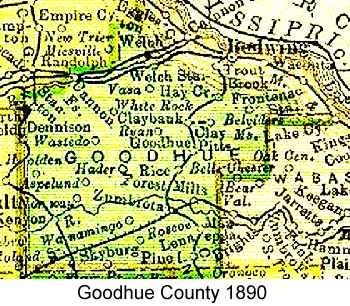
.png)
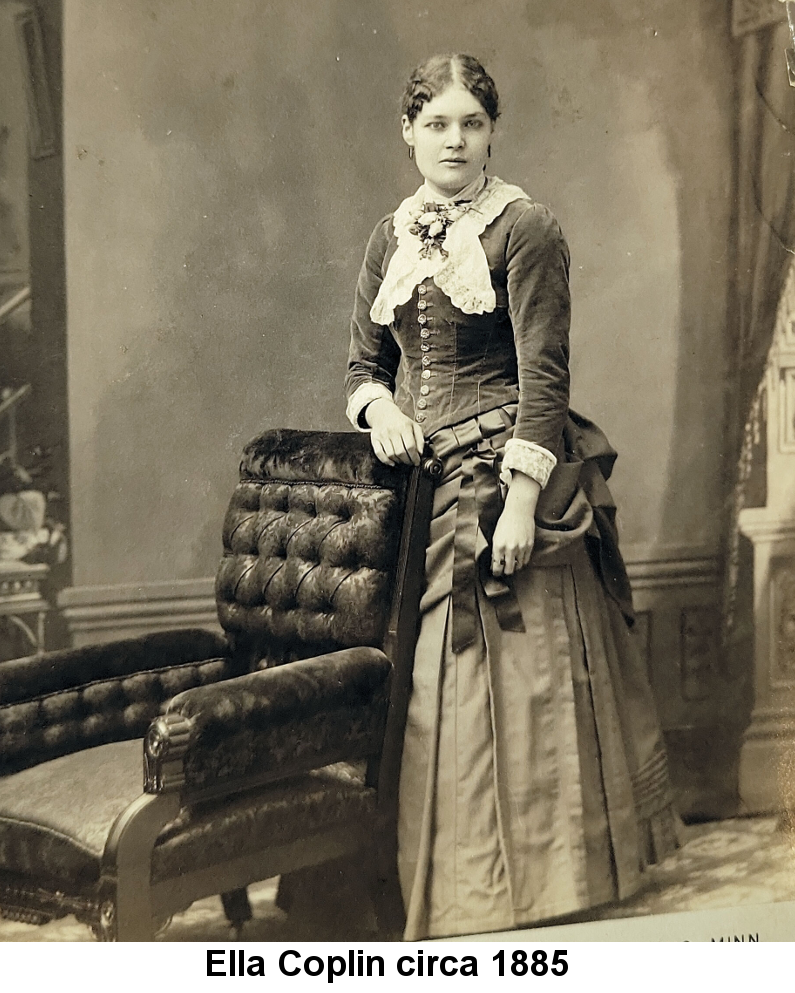
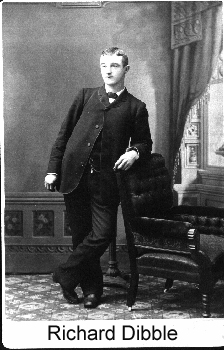
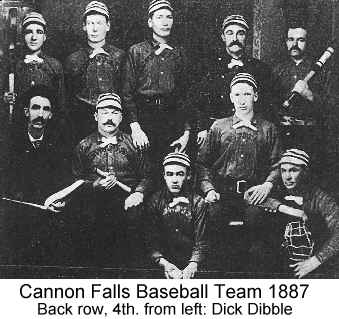
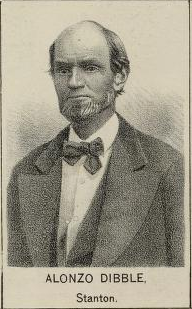
.png)
.png)
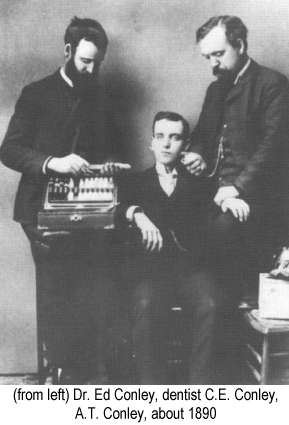
.png)
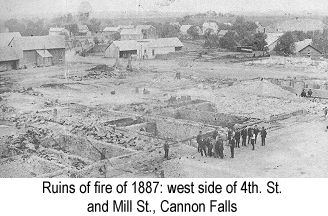
.png)
.png)
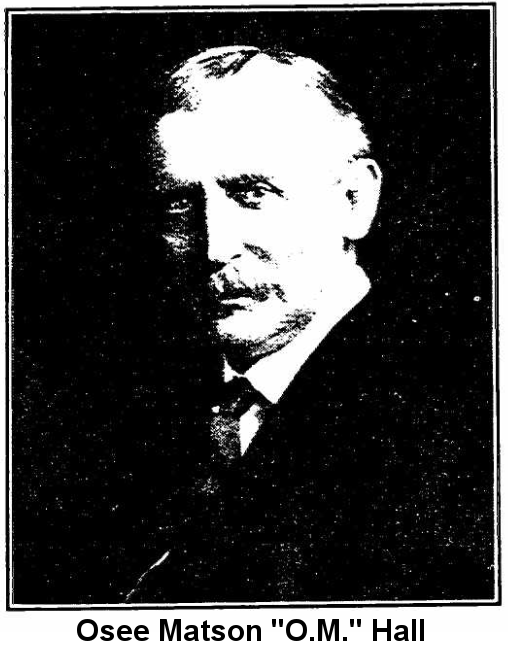
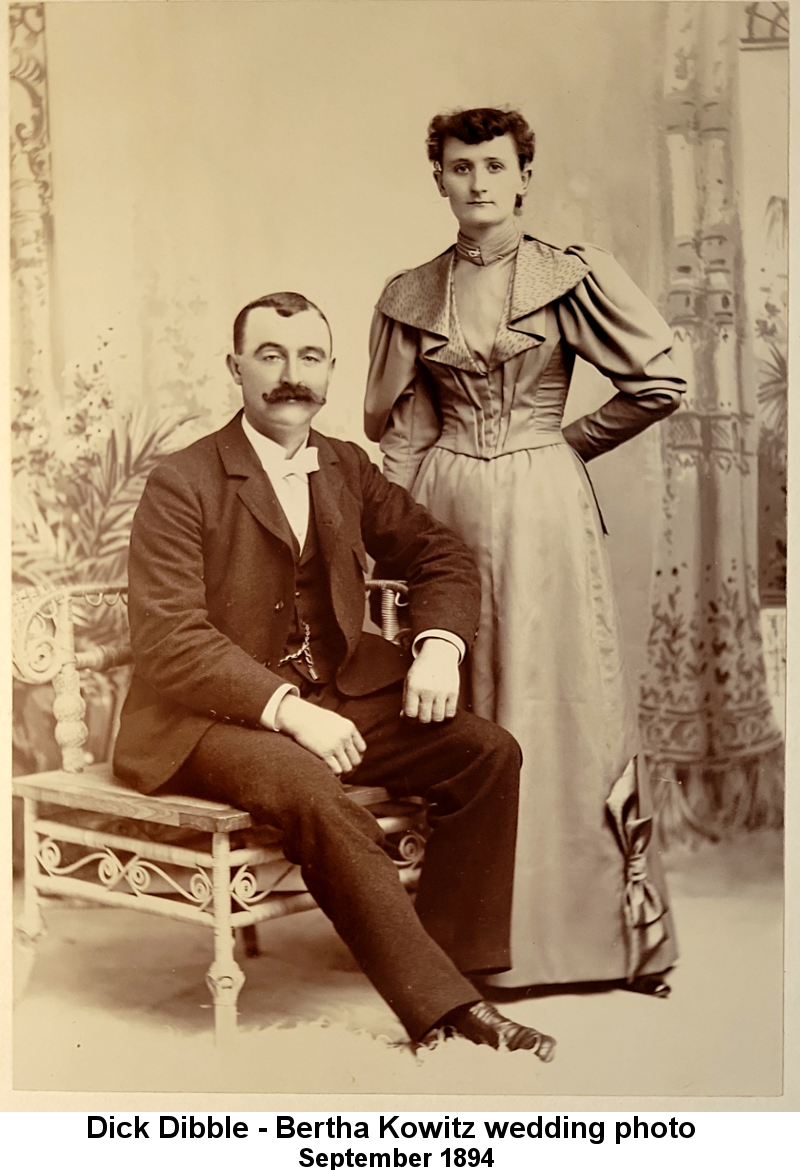
.png)
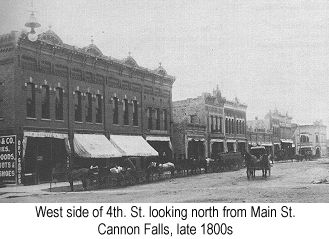
.png)
.png)
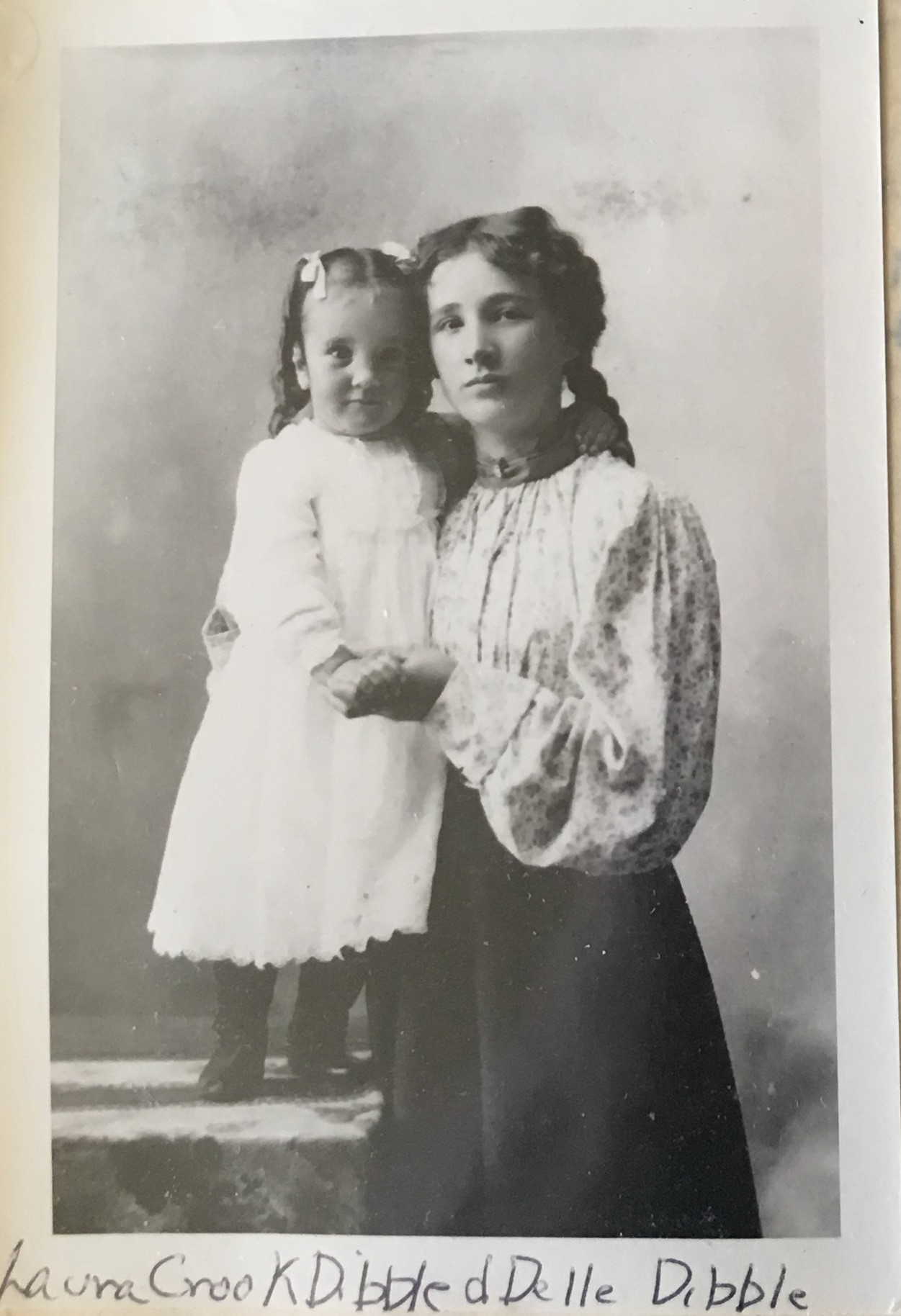
.png)

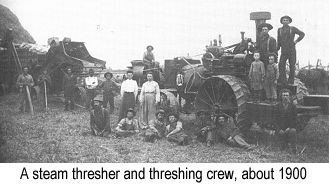
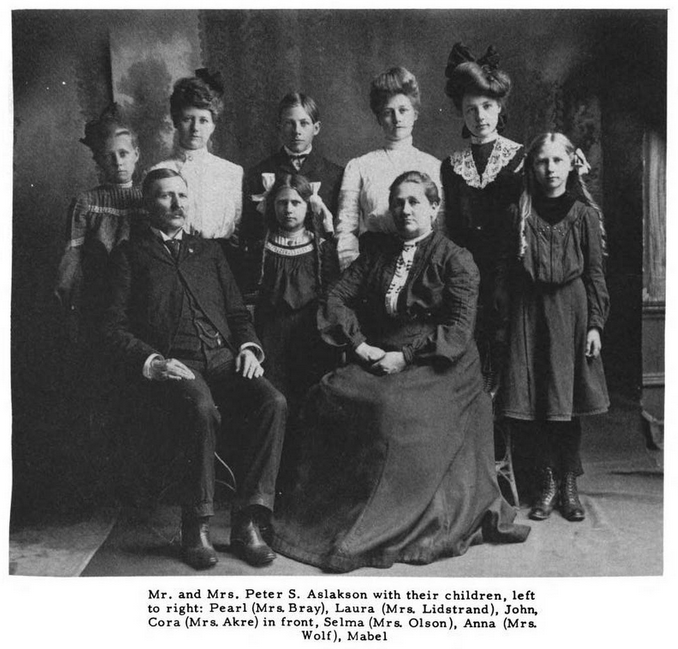
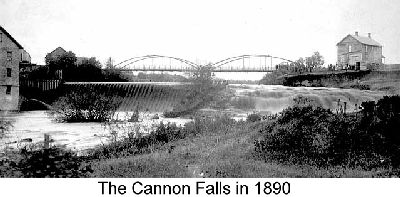
.png)
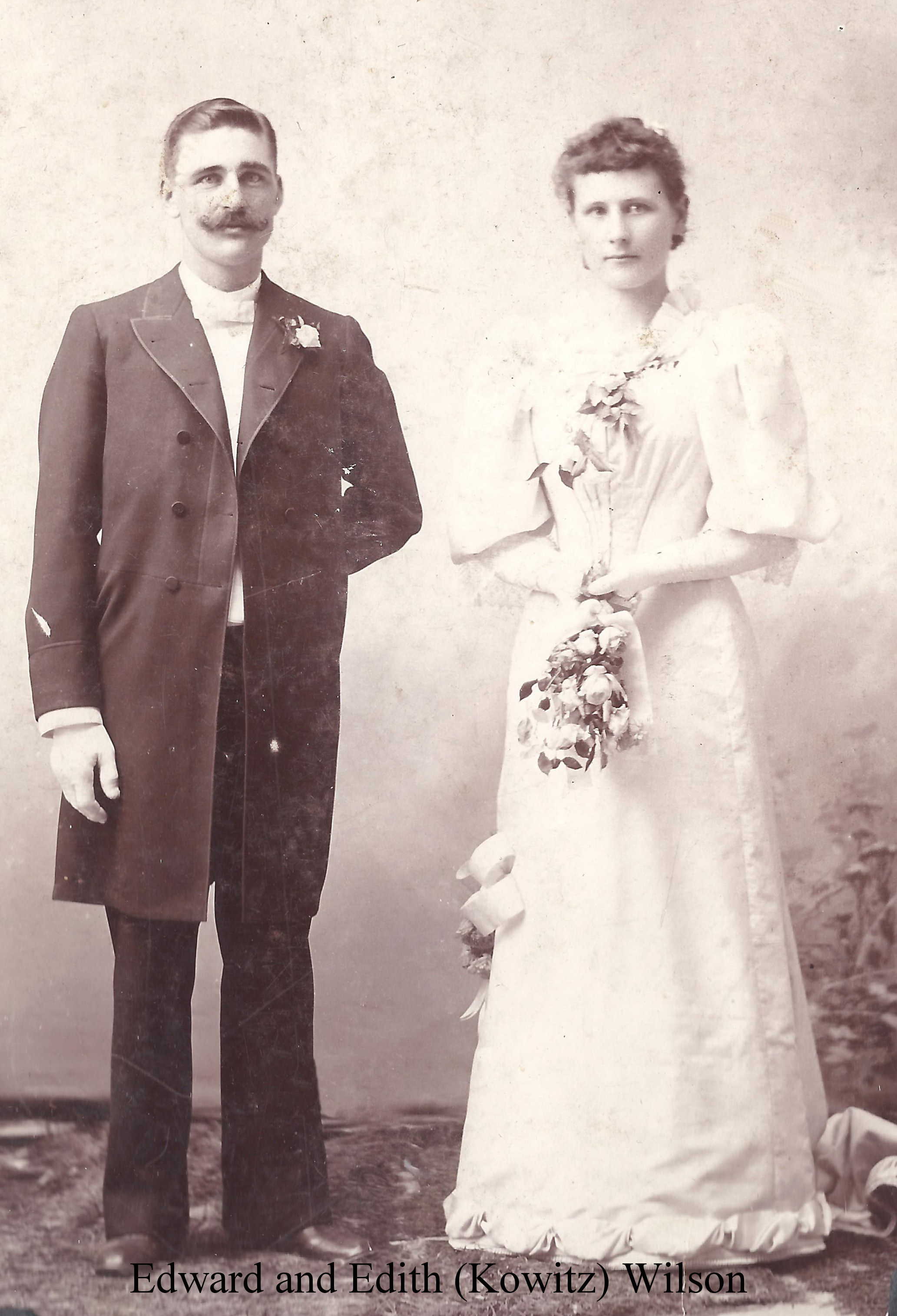
.png)
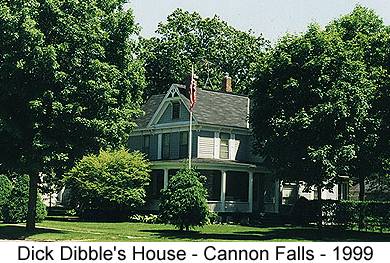
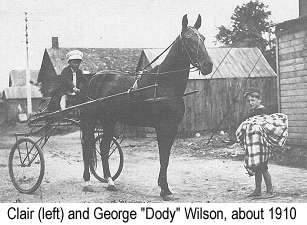
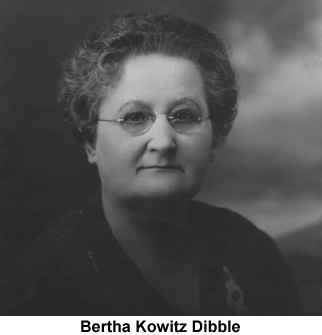
.png)
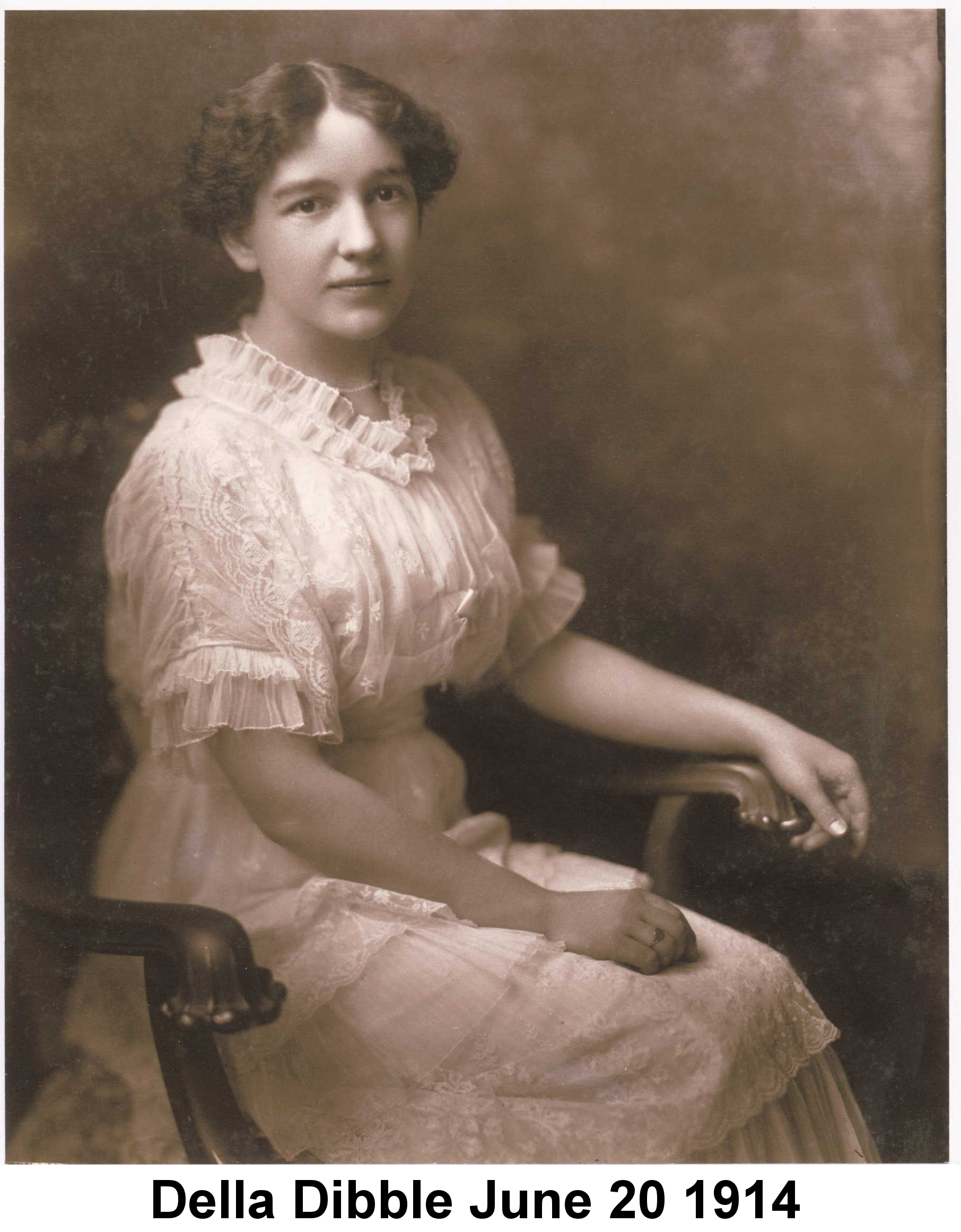
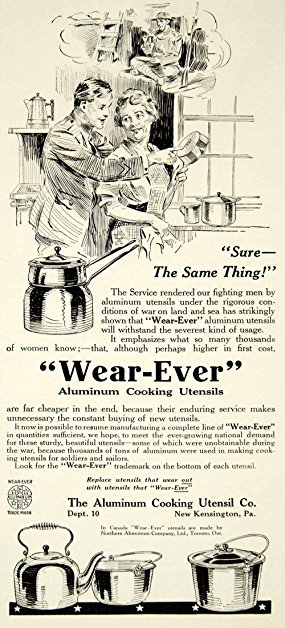
.png)
.png)
.png)
